The Turks and Caicos Islands are a charming archipelago of 40 low-lying coral islands located southeast of the Bahamas. The chain of islands boasts sparkling turquoise waters, pristine beaches, and a lush ecosystem full of diverse flora and fauna.
Among the remarkable species found in this tropical paradise are the birds, which attract birdwatching enthusiasts from all corners of the world.
Whether you are a seasoned birder or just a bird lover, the Turks and Caicos Islands offer a fantastic opportunity to observe a wide range of birds in their natural habitat.
From pelicans to parakeets, flamingos to ospreys, these avian creatures are a feast for the eyes and hold a significant place in the islands’ biodiversity and cultural heritage.
1. Plovers

Plovers are a family of around 64-68 species of ground-dwelling birds, commonly found in open country such as fields, meadows and tundras.
They have short bills with webbed feet to help them forage through mud or shallow water.
Plover plumage is usually mottled brown though some species may have brighter colors on the head and wings.
These birds feed mainly on insects but can also eat small crustaceans and worms.
Plovers breed during springtime when they dig holes in sandy or pebbled beaches to lay their eggs which hatch after about 3 weeks incubation period.
They use distraction display behaviour by pretending an injury to the predators away from their nests if needed for protecting their young ones.Scientific classification:
| Kingdom | Animalia |
| Phylum | Chordata |
| Class | Aves |
| Order | Charadriiformes |
| Family | Charadriidae Leach, 1820 |
Also Featured In: Most Common Birds in China, Turkey Birds You Should Know
2. Stilts And Avocets
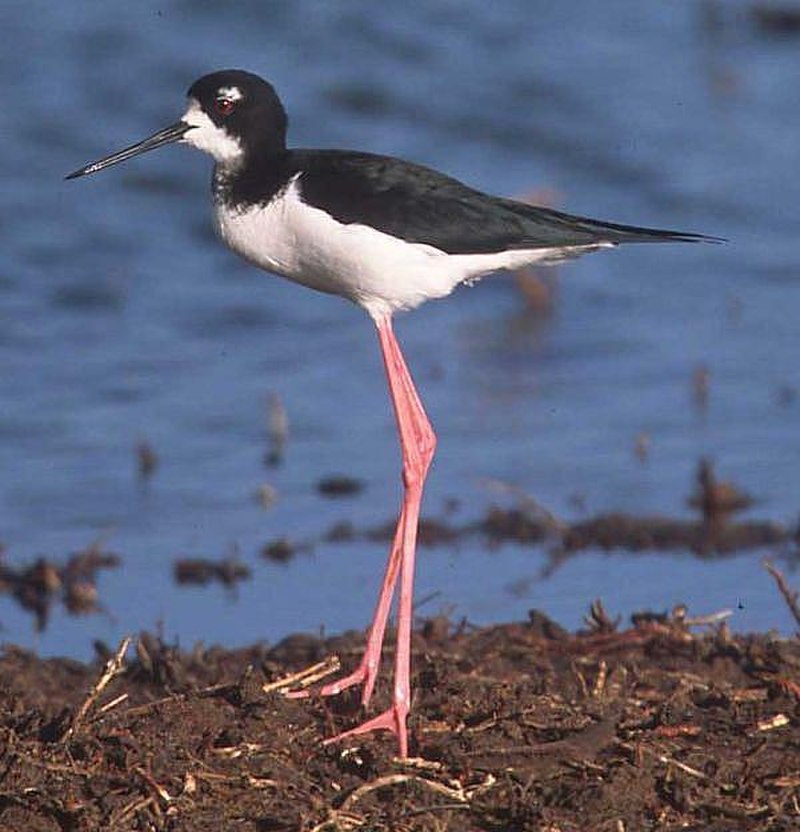
Stilts and avocets are two distinct groups of birds belonging to the family Recurvirostridae. They range in length from 30-46 cm (12-18 inches) and weigh between 140 – 435 g (4.9 – 15.3 ounces).
Males usually have slightly larger bodies than females, with long thin legs, necks and bills.
Avocet bills curve upwards uniquely while stilt beaks remain straight most times.
These wading birds live mainly near shorelines or wetlands where they feed on aquatic invertebrates like brine shrimp, insects etc., occasionally supplementing their diet with seeds or small fish too.
Stilts also inhabit open fields in search of food sources such as earthworms or grasshoppers during the non-breeding season.
Both groups migrate over large distances for warmer weathers when it gets cold outside.Scientific classification:
| Kingdom | Animalia |
| Phylum | Chordata |
| Class | Aves |
| Order | Charadriiformes |
| Suborder | Charadrii |
| Family | Recurvirostridae Bonaparte, 1854 |
Also Featured In: Native Birds of Kazakhstan, Birds of Sweden
3. Thrush
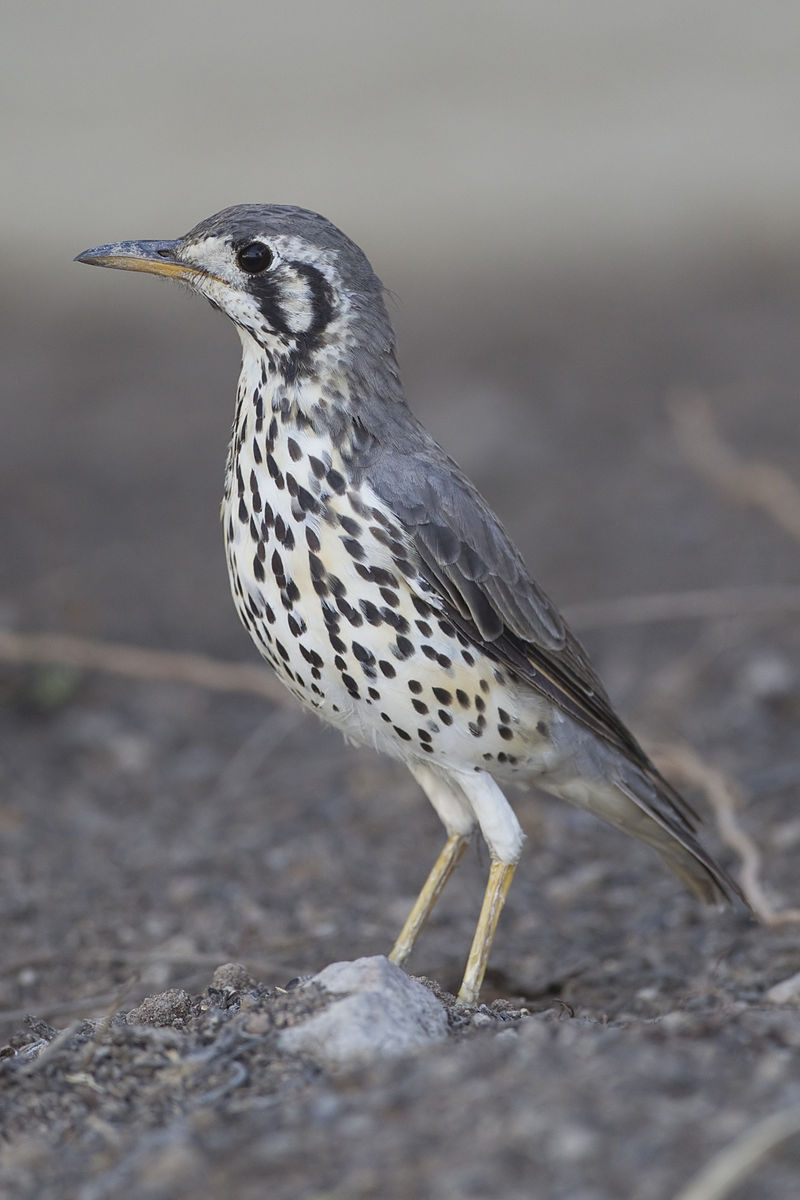
Thrushes are small to medium-sized birds belonging to the Turdidae family, and found all over the world. They live on or near the ground and feed on insects, other invertebrates and fruit.
Their feathers range from greyish browns to deep blues in colour with spotted wings that help them blend into their natural habitats such as forests, woodlands and shrubs.
Thrushes have distinctive songs which they sing during spring mating season; many species also perform complex flight displays for courtship rituals.
These birds may be solitary creatures but can often be seen foraging together in groups or pairs when searching for food sources like worms, snails or berries.
A healthy thrush population is an indication of a balanced environment since they require clean water sources as well as plenty of vegetation cover – making them important indicators of ecosystem health worldwide.Scientific classification:
| Kingdom | Animalia |
| Phylum | Chordata |
| Class | Aves |
| Order | Passeriformes |
| Suborder | Passeri |
| Family | Turdidae Rafinesque, 1815 |
Also Featured In: Common Birds in India, Most Common Songs Birds that Live around You
4. Tanagers
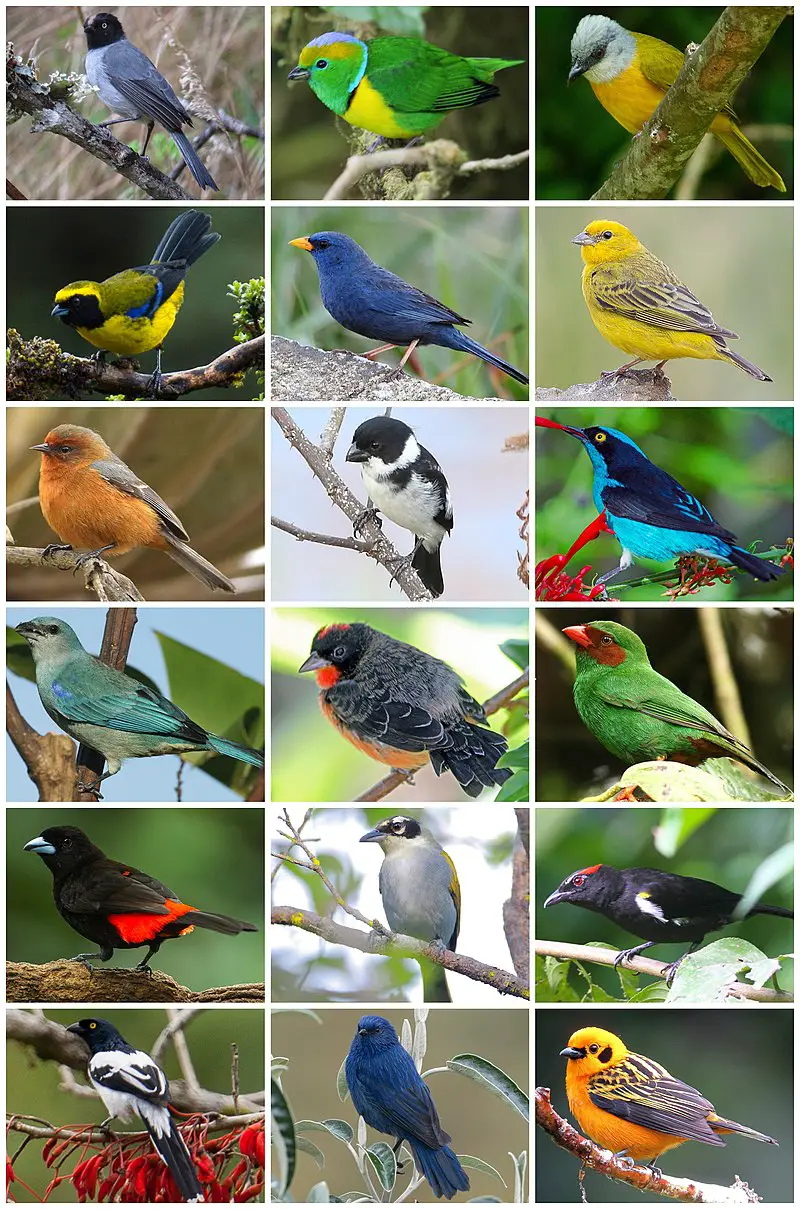
The Tanagers are a beautiful and diverse family of birds native to the Neotropical region. They boast an impressive array of colors, including blues, greens, yellows and reds.
The most common type is the fruit-eating tanager that can be found in tropical forests across Latin America. With nearly 240 species worldwide, they represent almost 4% of all avian species.
These vibrant birds have adapted well to their environment due to their strong bills used for cracking open hard fruits as well as sharp claws for gripping branches while feeding or perching.
As with many other bird families there is natural variation among populations making each one unique in its own way; something that makes them even more special.Scientific classification:
| Kingdom | Animalia |
| Phylum | Chordata |
| Class | Aves |
| Order | Passeriformes |
| Superfamily | Emberizoidea |
| Family | Thraupidae Cabanis, 1847 |
Also Featured In: Beautiful Brazilian Birds, Blue Birds You’ll Found around Us
5. Accipitridae
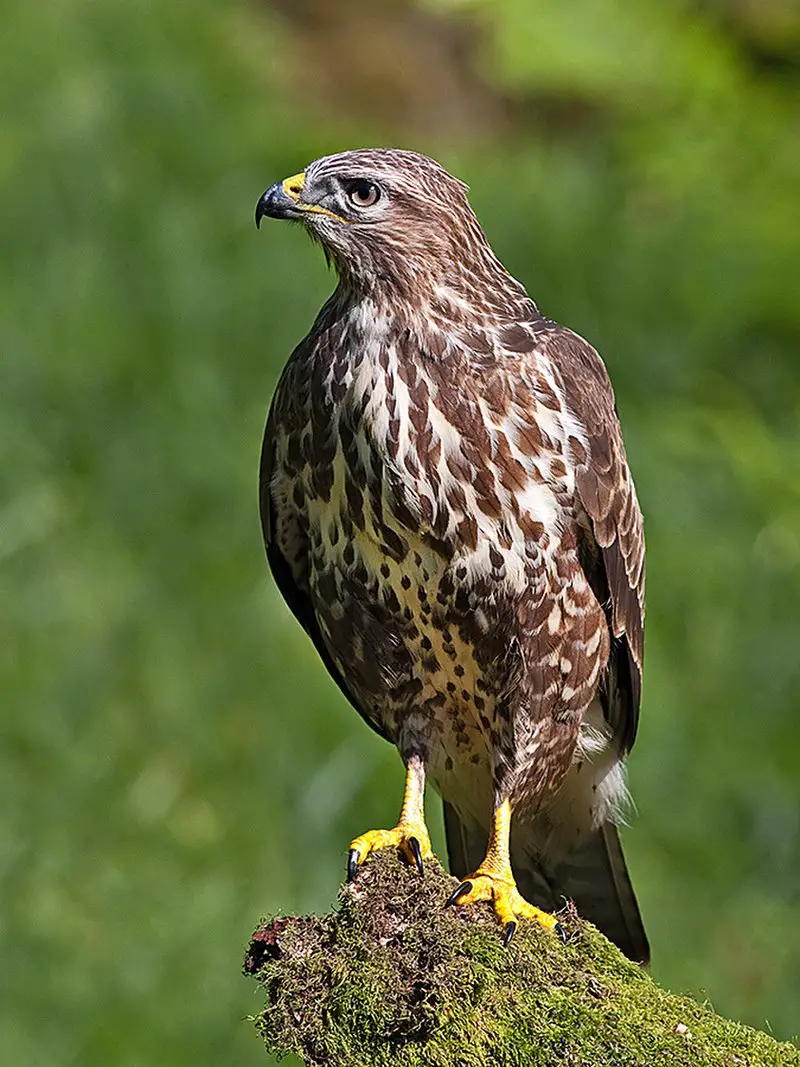
Accipitridae birds are a diverse family of raptors ranging in size from small to large. They have powerful hooked beaks which they use for hunting and tearing apart their prey, such as insects, medium-sized mammals and carrion.
Some species even feed on fruit. These birds can be found all over the world, making them an incredibly successful group of predators.
Accipitridae are adaptable hunters with keen eyesight that helps them spot potential meals from far away distances.
Their sharp talons assist them in grasping onto their victims while feeding or defending themselves against enemies.
Not only do these avian creatures provide us with visual beauty but also help keep our ecosystems healthy by keeping pest populations under control.Scientific classification:
| Kingdom | Animalia |
| Phylum | Chordata |
| Class | Aves |
| Order | Accipitriformes |
| Family | Accipitridae Vieillot, 1816 |
Also Featured In: Most Common Types of Bangladeshi Birds, Italian Birds You Should Know
6. Grebes
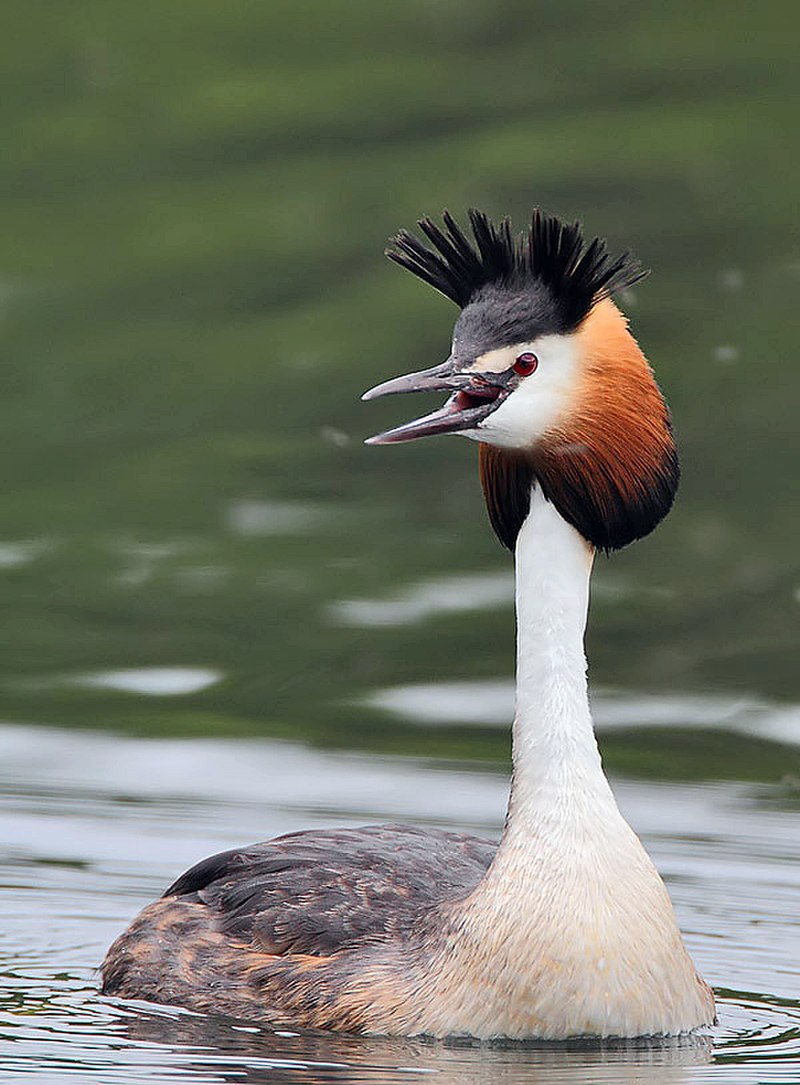
Grebes are a type of diving bird found in freshwater habitats around the world. They belong to the order Podicipediformes and have 22 species that exist across six genera.
Some species can also be found in marine environments during their migration or winter season, and some even live flightless lives on stable lakes.
Grebes vary greatly between regions; for example, they range from 4-32 inches long with anywhere from 8-30 ounces of weight depending on which species it is.
Their plumage may be black, browns/grays or whites but usually consist of bright colors such as yellows, blues and greens while underwater they use these feathers to help them streamline through the water quickly.Scientific classification:
| Kingdom | Animalia |
| Phylum | Chordata |
| Class | Aves |
| Clade | Neoaves |
| Clade | Mirandornithes |
| Order | Podicipediformes Fürbringer, 1888 |
| Family | Podicipedidae Bonaparte, 1831 |
Also Featured In: Common Birds in Japan, Water Birds Live around Us
7. Rail
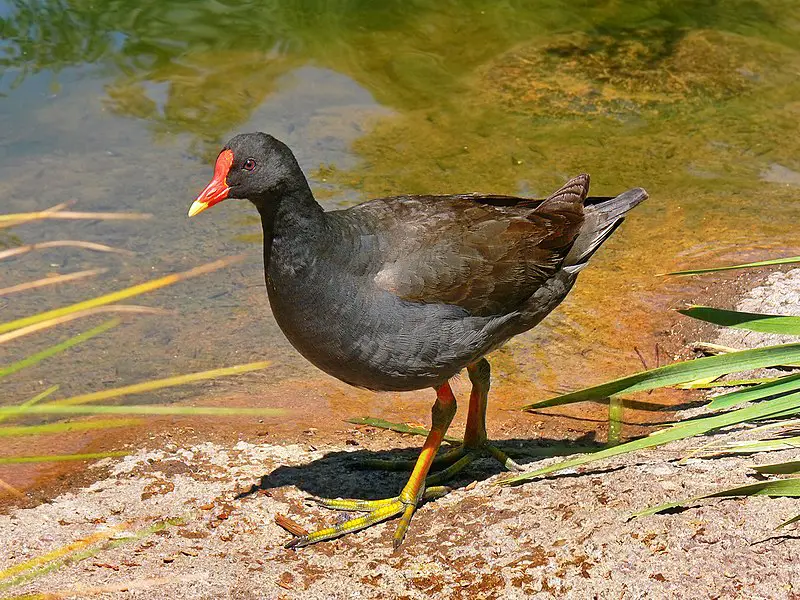
Rails are a diverse family of birds, ranging from small to medium size and living in habitats across the world.
They can be found around wetlands, as well as any other land-based environment except for dry deserts, polar regions or areas with persistent snow cover.
These ground-dwellers have short legs and long toes that help them maneuver through wetland vegetation easily.
Tey typically feed on insects and aquatic invertebrates but will also eat seeds and berries when available.
Species such as coots, crakes and gallinules have evolved different bill shapes to allow them to navigate their environments more efficiently while searching for food.
Rails live both alone or in pairs depending on the species; some migrate seasonally while others remain at one location year round.Scientific classification:
| Kingdom | Animalia |
| Phylum | Chordata |
| Class | Aves |
| Order | Gruiformes |
| Family | Rallidae Rafinesque, 1815 |
Also Featured In: Most common Birds in France, Common Denmark Birds
8. Procellariidae
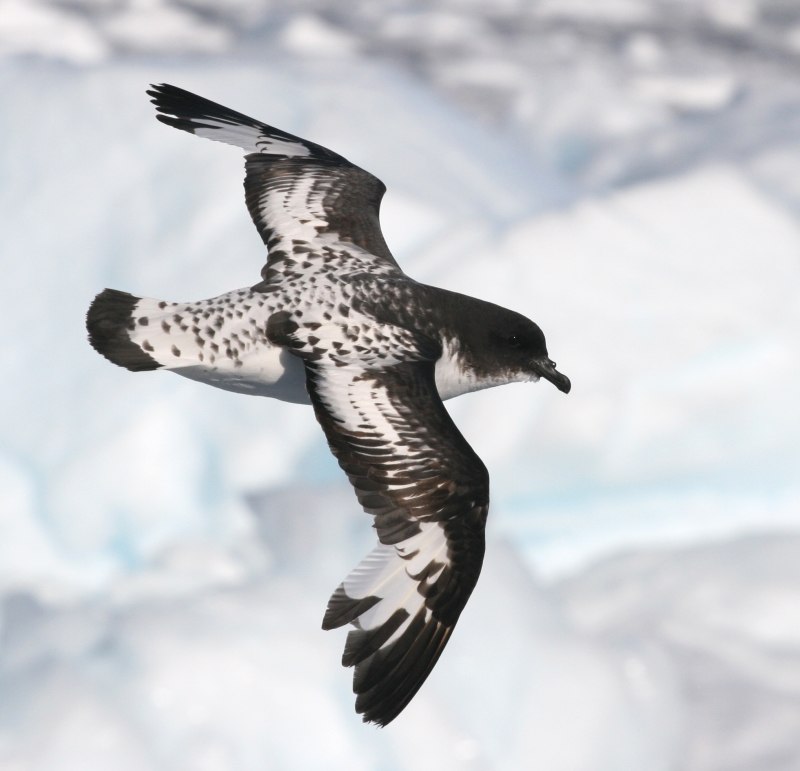
Procellariidae is a diverse family of seabirds belonging to the bird order Procellariiformes.
These birds are commonly referred to as tubenoses and include fulmarine petrels, gadfly petrels, diving petrels, prions, and shearwaters.
They range in size from the small storm-petrel which measures around 18cm long to the giant albatross which can reach up to 3 meters in length.
Generally found near oceans or coasts where they feed on fish as well as squid and other marine life depending on species.
Many procellariids will also nest inland during breeding season before returning back out at sea for most of their lives.
Their wings have specially adapted feathers that give them incredible gliding abilities allowing them literally fly with minimal effort over vast distances across oceanic regionsScientific classification:
| Kingdom | Animalia |
| Phylum | Chordata |
| Class | Aves |
| Order | Procellariiformes |
| Family | Procellariidae Leach, 1820 |
Also Featured In: Birds You’ll Find in the Sea, Bulgarian Birds
9. Threskiornithidae
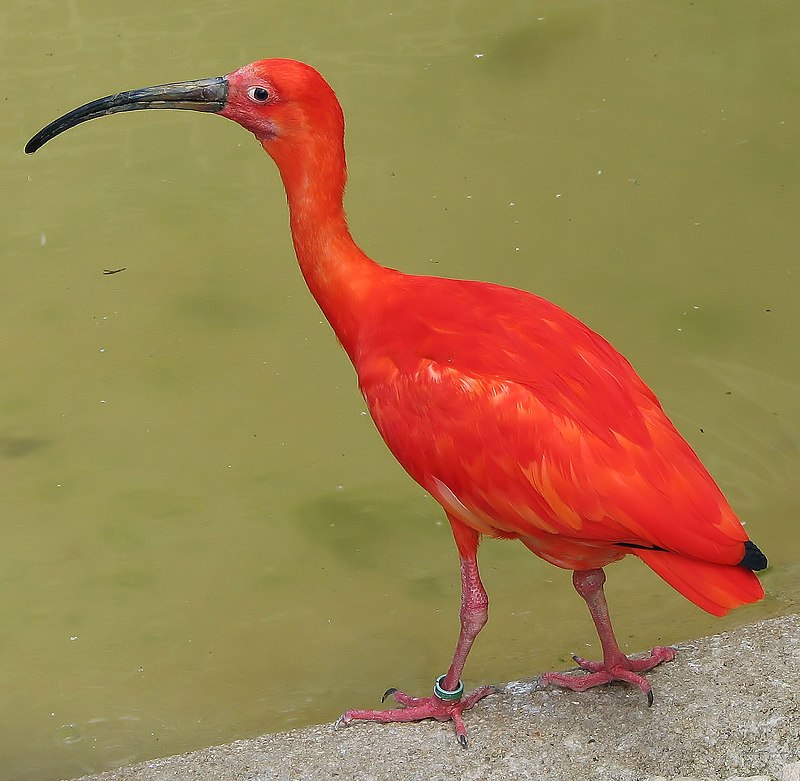
Threskiornithidae is a family of large wading birds which includes 36 species. These birds are traditionally divided into two subfamilies – the ibises and the spoonbills.
However, recent genetic analysis has shown that spoonbills actually belong to Old World ibis group, while New World ibises form an early offshoot from this lineage.
Threskiornithidse members have long curved beaks with serrated edges used for catching fish in shallow water or mudflats, as well as other aquatic invertebrates like crustaceans and mollusks.
They also feed on plant matter such as grains and seeds found close to wetlands areas where they live.
This diverse diet makes them important scavengers in their ecosystems, helping maintain healthy populations of native wildlife by controlling insect numbers and dispersing energy-rich seeds throughout wetland habitats.Scientific classification:
| Kingdom | Animalia |
| Phylum | Chordata |
| Class | Aves |
| Order | Pelecaniformes |
| Suborder | Ardei |
| Family | Threskiornithidae Richmond, 1917 |
Also Featured In: Common Uzbekistan Birds, Birds that Live in Croatia
10. Falcons And Caracaras
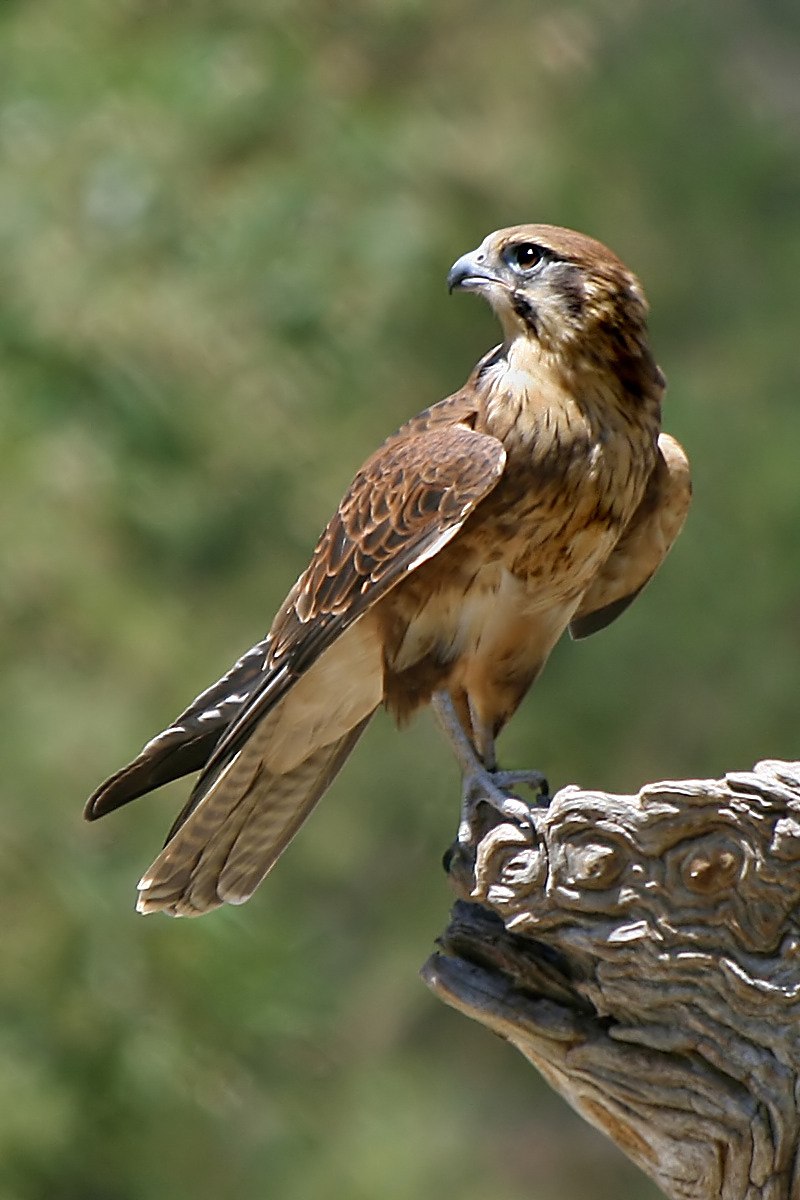
Falcons and caracaras are birds of prey that belong to the family Falconidae. They have impressive sharp talons, hooked beaks and keen eyesight which makes them excellent hunters.
Falcons can reach speeds up to 200 mph when diving for their prey while caracaras use a combination of running and flying to hunt small mammals such as rabbits or rats.
Both falcons and caracaras live in various areas around the world from grasslands, deserts, forests, wetlands or even urban areas where they nest on cliffs or tall buildings.
The diet mainly consists insects but also includes larger animals like reptiles or other birds which they catch by surprise with fast dives out of the sky.Scientific classification:
| Kingdom | Animalia |
| Phylum | Chordata |
| Class | Aves |
| Order | Falconiformes |
| Family | Falconidae Leach, 1820 |
Also Featured In: Native South Korean Birds, Birds Found in Hungary
11. American Flamingo
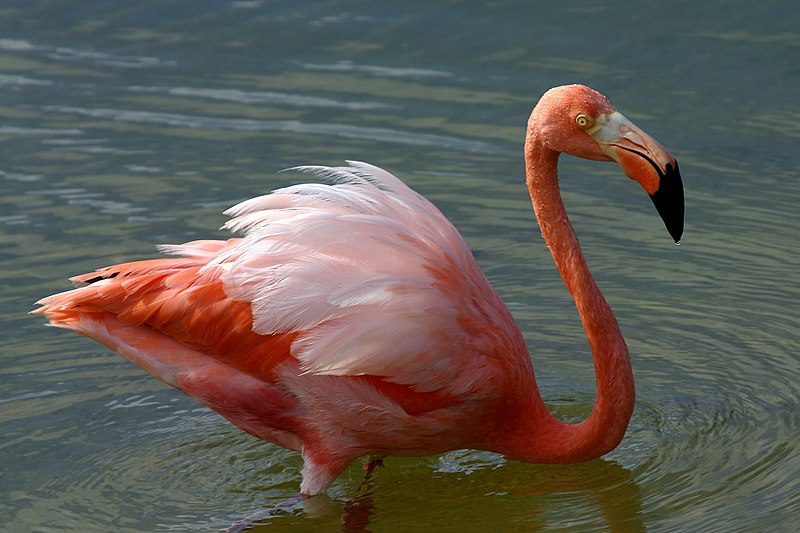
The American flamingo is a large species of bird found in the Neotropics. It has bright pink feathers and long legs, making it easily distinguishable from other species of flamingos.
The diet consists mostly of shrimp and small fish but they are also known to eat algae, aquatic insects, mollusks, crustaceans and seeds.
They live around coastal lagoons or salt ponds in colonies with thousands of birds nesting together on mud flats.
Flamingos build nests out of sticks that sit atop their feet as they wade through shallow waters looking for food during low tide periods when these areas become more accessible for feeding purposes.
These birds have an interesting courtship ritual involving neck stretching which looks like a dance to attract mates before breeding season begins in May-June each year leading to chicks hatching during July-August time periodScientific classification:
| Kingdom | Animalia |
| Phylum | Chordata |
| Class | Aves |
| Order | Phoenicopteriformes |
| Family | Phoenicopteridae |
| Genus | Phoenicopterus |
| Species | P. ruber |
Also Featured In: Common Birds in Colombia, Birds You’ll Find in Zoo
12. Tyrant Flycatchers
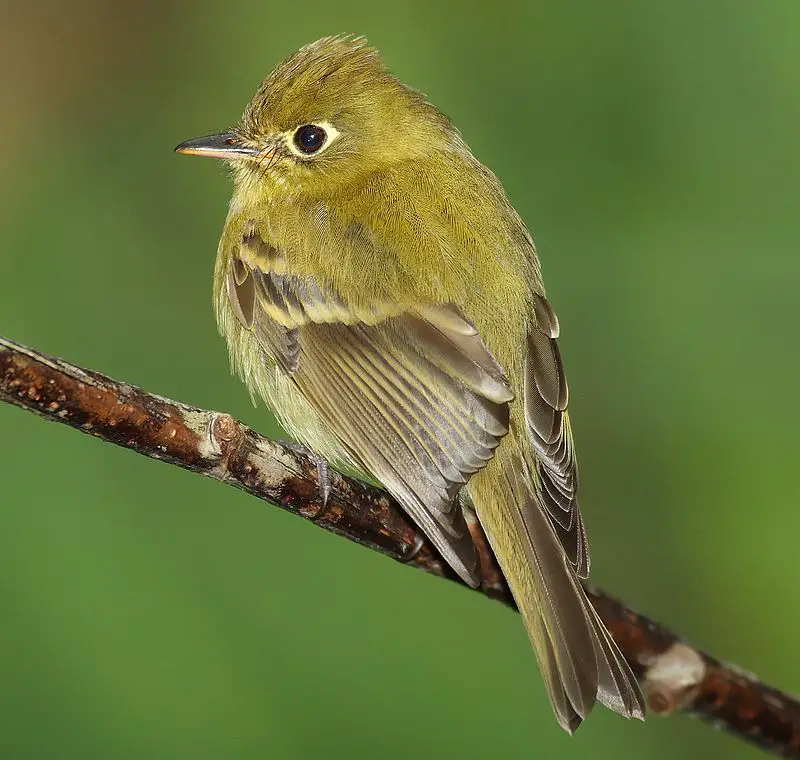
Tyrant flycatchers are a family of birds found in North and South America, containing over 400 species. These birds come in an array of shapes and sizes, with vibrant plumage to match.
They�re the most diverse avian family across all countries they inhabit except for the United States and Canada.
Their diet consists mainly of insects but also includes small reptiles or amphibians where available.
The behavior varies between each bird; some prefer open areas while others like dense forests as their habitat � many even migrate regularly.
Tyrant Flycatchers have adapted well to human presence thanks to the abundance of food sources that often accompany it � such as backyards, parks etc..
All things considered these incredible creatures are truly amazing.Scientific classification:
| Kingdom | Animalia |
| Phylum | Chordata |
| Class | Aves |
| Order | Passeriformes |
| Parvorder | Tyrannida |
| Family | Tyrannidae Vigors, 1825 |
Also Featured In: Birds of Argentina, Birds that You’ll Find in Puerto Rico
13. Mimid
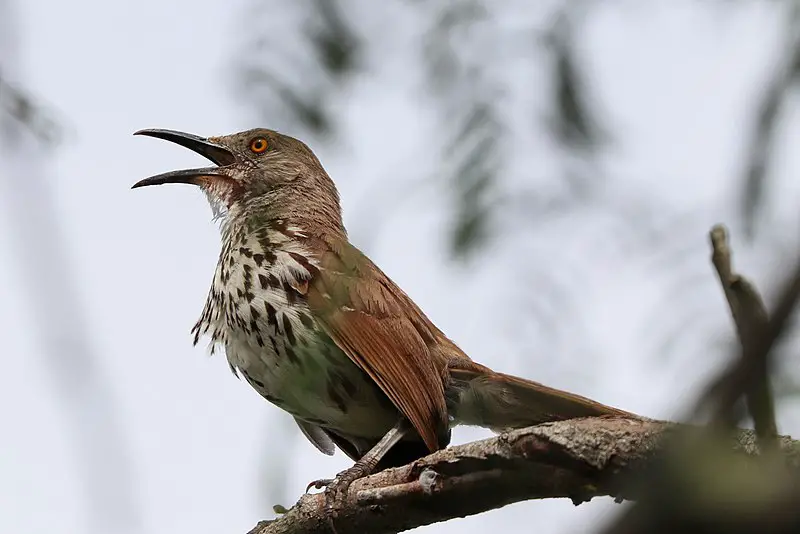
Mimid birds are a diverse family of passerines found in the New World. They have an impressive vocal range and many species excel at mimicking other bird songs, as well as noises from their environment.
Mimids can be identified by their flat heads with short crest feathers, long tails, large eyes and strong legs for hopping between branches.
These birds typically inhabit open woodlands or scrubland areas where they feed on insects such as beetles, caterpillars and grasshoppers.
Some species also supplement their diet with fruits or grains when available. While most do not migrate far during winter months some may undertake longer migrations to warmer climates if necessary to survive cold weather spells.
The wide variety of sounds these talented singers produce make them one of nature’s great musical performers.Scientific classification:
| Kingdom | Animalia |
| Phylum | Chordata |
| Class | Aves |
| Order | Passeriformes |
| Superfamily | Muscicapoidea |
| Family | Mimidae Bonaparte, 1853 |
Also Featured In: Most Beautiful Birds in Guatemala, Most Common Lake Birds
14. Gnatcatcher
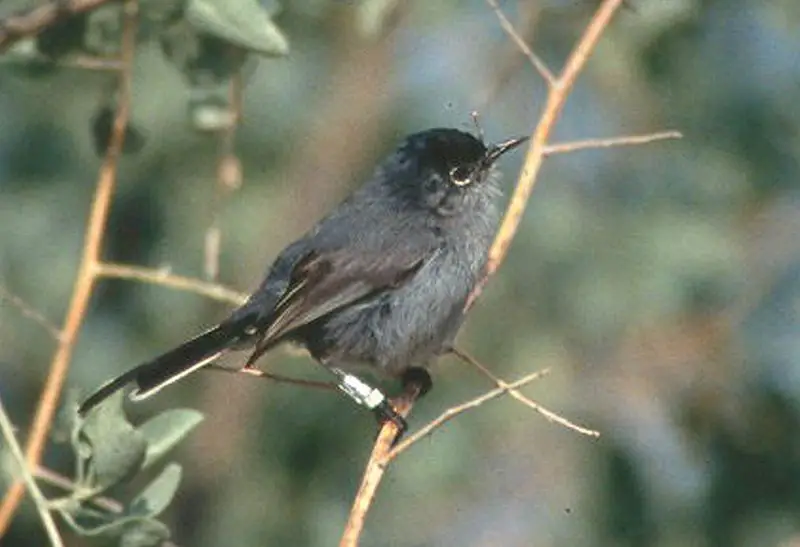
Gnatcatchers are small passerine birds from the family Polioptilidae. They inhabit North and South America, apart from far south regions and high Andean areas.
Most species of this mostly tropical and subtropical group remain in one area year-round; however, the blue-grey gnatcatcher of U.S.A and Canada migrate to warmer climates during wintertime.
Gnatcatchers share a close relation with wrens.[1] The size varies between 5–7 inches long depending on specie, they typically have dark upperparts while their underparts range in color: white or greyish shades may predominate but some species show yellow tinting too.
Their diet consists mainly insects which is usually captured by short sallies above vegetation level when foraging for food.Scientific classification:
| Kingdom | Animalia |
| Phylum | Chordata |
| Class | Aves |
| Order | Passeriformes |
| Superfamily | Certhioidea |
| Family | Polioptilidae Baird, 1858 |
Also Featured In: Birds that Live in Newfoundland and Labrador, Small Birds that Commonly Found in Ohio
15. Frigatebird
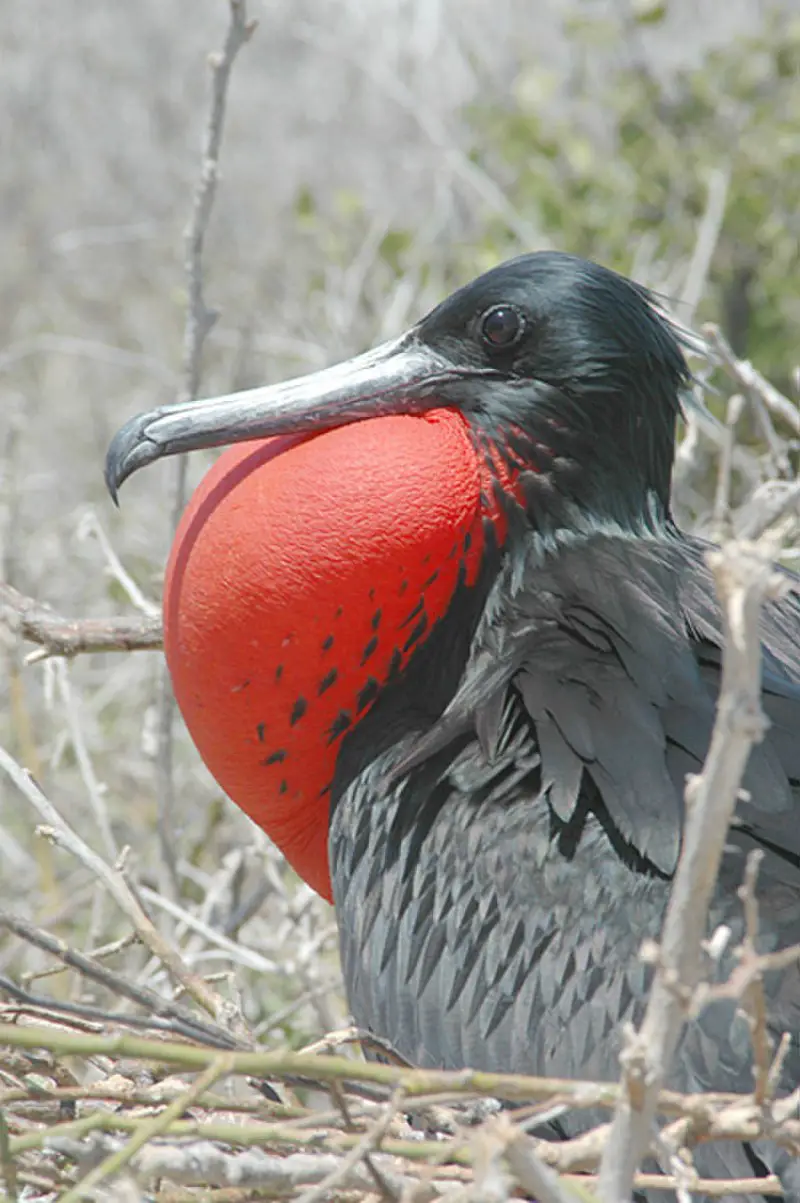
Frigatebirds are a beautiful and mysterious family of seabirds, found in all tropical and subtropical oceans. The five extant species have glossy black plumage, long forked tails, and lengthy hooked bills.
During the breeding season males display a bright red gular pouch which they inflate to attract mates. Females have white underbellies year-round giving them an elegant contrast against their darker feathers.
They spend most of their lives soaring with minimal effort over warm ocean waters seeking food such as fish or squid taken from the surface or plucked out of midair by other birds.
Frigatebirds often nest on isolated islands due to lack of predators yet still manage to travel incredibly large distances between feeding grounds every day making them truly remarkable creatures.Scientific classification:
| Kingdom | Animalia |
| Phylum | Chordata |
| Class | Aves |
| Order | Suliformes |
| Family | Fregatidae Degland & Gerbe, 1867 |
| Genus | Fregata Lacépède, 1799 |
Also Featured In: Birds of Ecuador, Flocks Birds around Us
16. Motacillidae
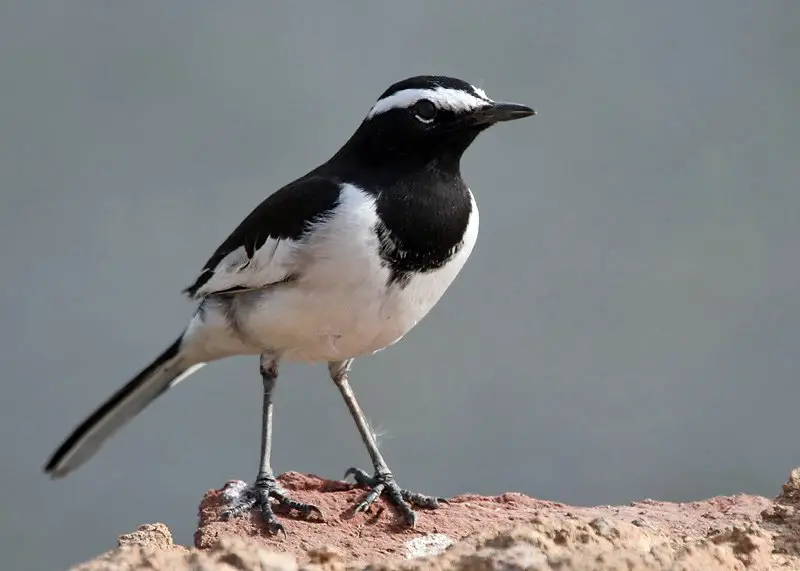
Motacillidae is a family of small passerine birds consisting of around 70 species. They are found across Europe, Africa, Asia and even Alaska with two migratory breeding species.
The three genera they belong to include wagtails which typically have medium to long tails; longclaws that can only be spotted in the Afrotropics; and pipits which possess the most cosmopolitan distribution worldwide.
These birds feed on insects as well as seeds for their diets and are usually seen in open habitats such grasslands or wetlands where food sources like invertebrates can easily be accessed.
Most Motacillidae species also use mud nests during breeding season making them easy targets for predators so it’s important we protect these beautiful creatures.Scientific classification:
| Kingdom | Animalia |
| Phylum | Chordata |
| Class | Aves |
| Order | Passeriformes |
| Superfamily | Passeroidea |
| Family | Motacillidae Horsfield, 1821 |
Also Featured In: Birds of Belgium, Belarus Birds You Should Know
17. Greater Antillean Bullfinch
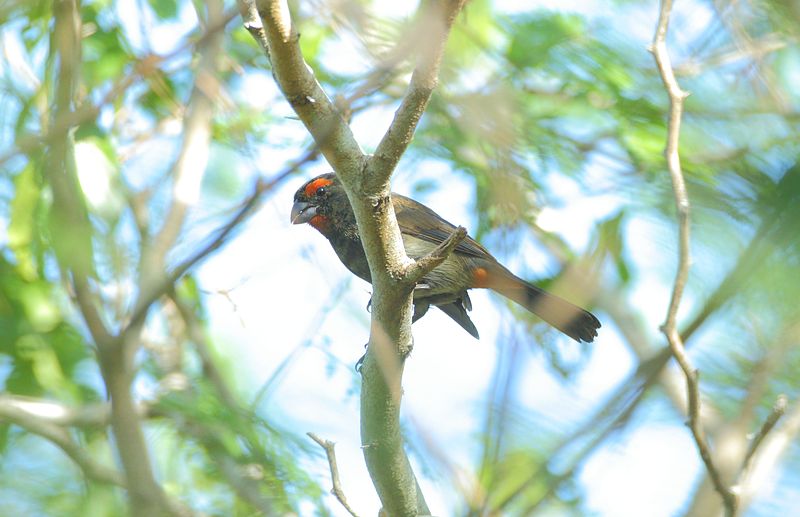
The Greater Antillean Bullfinch is a species of bird in the Thraupidae family. It can be found across many places, like the Bahamas, Hispaniola (Dominican Republic and Haiti), Jamaica, and Turks & Caicos Islands.
This beautiful bird prefers to inhabit subtropical or tropical dry forests as well as moist lowland/montane forests.
Its main features are its bright yellow bill with pink gape flange, olive green upperparts while underparts have grey tinge on them along with some white markings near breast area.
All these characteristics help it stand out from other birds living in similar habitats.Scientific classification:
| Kingdom | Animalia |
| Phylum | Chordata |
| Class | Aves |
| Order | Passeriformes |
| Family | Thraupidae |
| Genus | Melopyrrha |
| Species | M. violacea |
Also Featured In: Birds of Haiti, Birds That You’ll Find in Hispaniola
18. Black-Capped Petrel
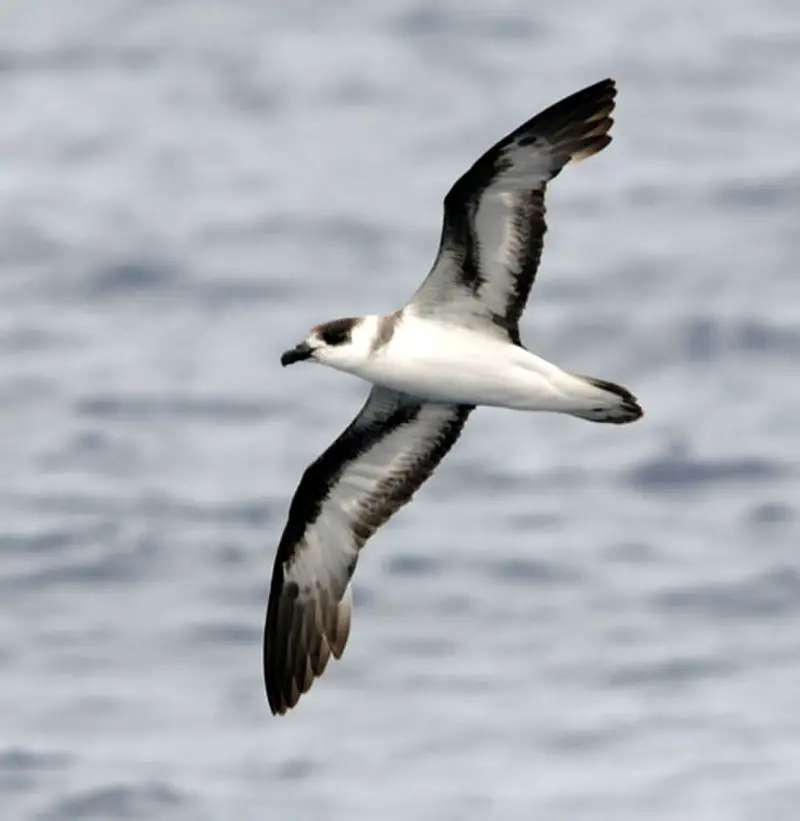
The Black-capped Petrel is a small seabird native to the West Indies. It has grey-brown back and wings, with a white nape and rump.
Its distinct feature is its black cap which extends to cover the eye in some individuals.
They have mainly white underparts apart from dark underwing markings as well.
These birds typically feed on crustaceans, fish eggs, squid or jellyfish plucked out of water while flying low over it with their relatively long wingspan aiding them in flight efficiency and speed.
Breeding season occurs around July-September during which they inhabit rocky cliff ledges near the shorelines for nesting purposes where they lay one egg at a time per nest.Scientific classification:
| Kingdom | Animalia |
| Phylum | Chordata |
| Class | Aves |
| Order | Procellariiformes |
| Family | Procellariidae |
| Genus | Pterodroma |
| Species | P. hasitata |
Also Featured In: British Virgin Islands Birds You Need to See, Caribbean Birds
19. Black-Whiskered Vireo
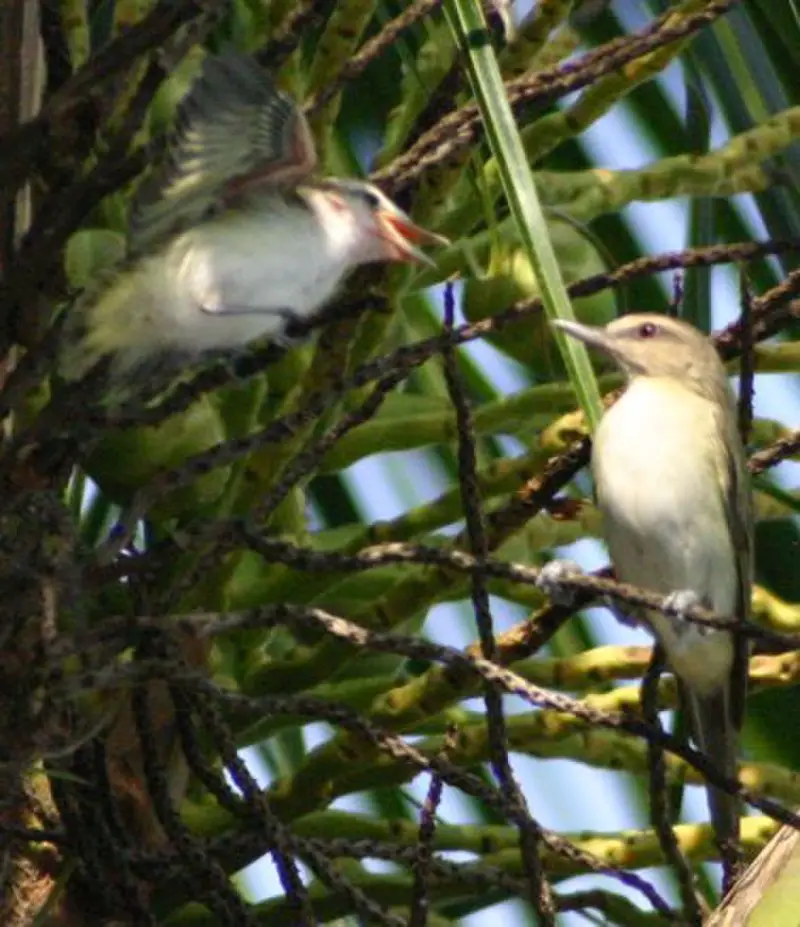
The black-whiskered vireo is a small passerine bird, found in the southern United States, West Indies and northern South America.
It breeds mainly in open deciduous wooded areas but has been known to be an occasional vagrant to Costa Rica.
This species migrates partially north during its winter season from Greater Antilles up towards northern parts of South America.
The male can easily be identified by his distinctive black whiskers on either side of its face while females are generally duller with white streaks along their wings and back.
They make nests at mid tree levels usually out of twigs, grasses or strips of bark which they line with finer materials like feathers or fur for insulation purposes.
All in all these birds are delightful additions to any habitat where they inhabit.Scientific classification:
| Kingdom | Animalia |
| Phylum | Chordata |
| Class | Aves |
| Order | Passeriformes |
| Family | Vireonidae |
| Genus | Vireo |
| Species | V. altiloquus |
Also Featured In: Martinique Island Birds You Should Know, Cozumel Birds You Didn’t Know
20. Cuban Crow
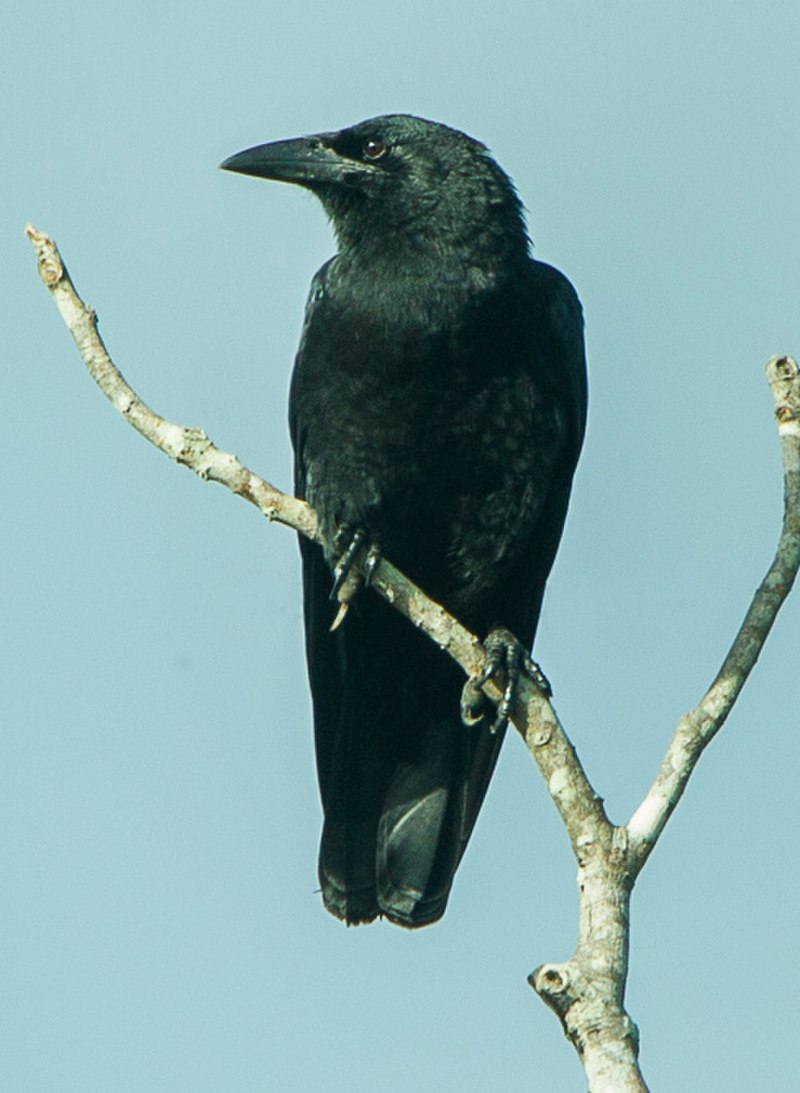
The Cuban crow is a beautiful and unique species of bird native to the Caribbean. It has black plumage, with white feathers on its neck, giving it an elegant look.
Its bill is hooked and tapered at the tip, while its legs are stout and grey in color. The Cuban crow feeds mainly on fruits from trees but will also feed on insects or carrion if necessary.
It often congregates in large flocks when searching for food sources, making them easy to spot among other birds of prey.
They have adapted well to human disturbance due their ability to quickly adapt behaviorally; this makes them tolerant of people near nesting sites as long as they remain undisturbed by noise or activity nearby.
Despite threats posed by habitat destruction caused by hurricanes and deforestation, these intelligent crows continue to thrive throughout Cuba’s countryside areas today.Scientific classification:
| Kingdom | Animalia |
| Phylum | Chordata |
| Class | Aves |
| Order | Passeriformes |
| Family | Corvidae |
| Genus | Corvus |
| Species | C. nasicus |
Also Featured In: Most Common Types of Birds Found in Cuba, Native Birds Of Middle Caicos
21. Thick-Billed Vireo
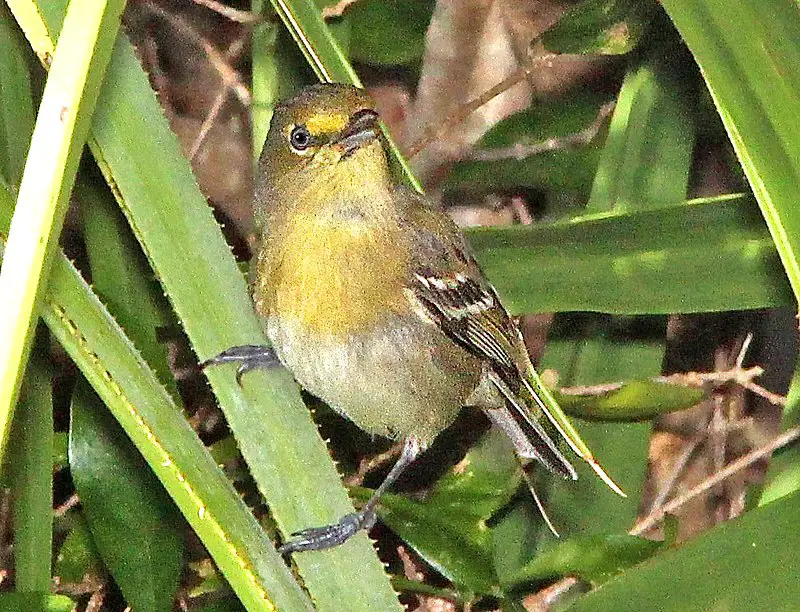
The Thick-billed Vireo is a small songbird native to the West Indies, found in places such as The Bahamas, Turks and Caicos Islands, Cayman Islands and on cays off Cuba.
Occasionally it has been spotted as far away as south Florida. It is classified into one species with two subspecies: Vireo crassirostris and V.c. approximans of Providencia Island which may be considered its own species by some authorities.
This bird prefers dry forests or mangrove swamps for nesting where there are plenty of trees available for habitat protection from predators like hawks or owls.
Its diet consists mainly of insects but also includes fruits when they’re in season.
In order to avoid competition with other birds during breeding times these vireos migrate northward each year between April and June returning again around October before winter sets in making them an interesting sight if you happen to spot one.Scientific classification:
| Kingdom | Animalia |
| Phylum | Chordata |
| Class | Aves |
| Order | Passeriformes |
| Family | Vireonidae |
| Genus | Vireo |
| Species | V. crassirostris |
Also Featured In: Grand Bahama Birds,
22. Western Spindalis
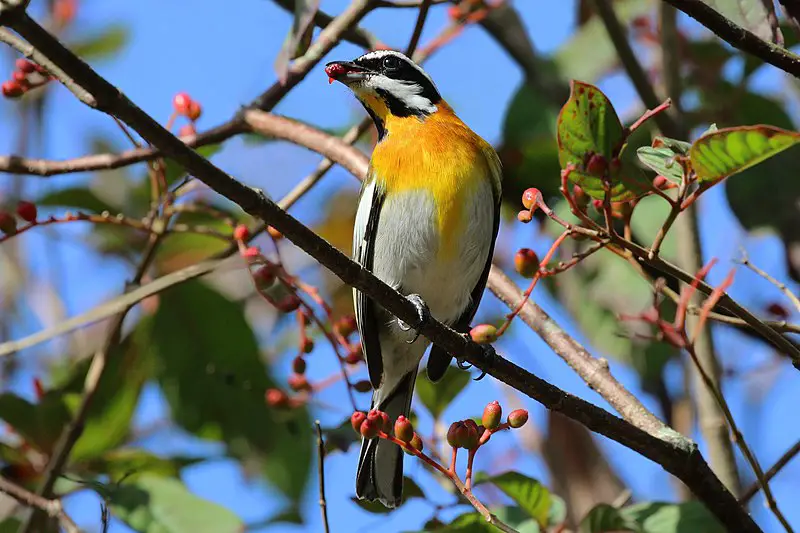
The Western Spindalis is a unique and fascinating species of songbird. It was formerly classified as a stripe-headed tanager, but it has since been reclassified as incertae sedis – that is, its exact place in the avian family tree cannot be determined.
This bird stands out from other birds due to its colorful plumage; males have yellow heads with black streaks across their faces while females are olive green all over with white stripes on the wings and back.
They inhabit tropical forests throughout much of Central America where they feed mainly on fruits and insects.
These birds are agile fliers who often flock together in small groups or pairs when searching for food sources such as mangoes, papayas, figs or even nectar from flowers.
The Western Spindalis makes an interesting addition to any backyard aviary.Scientific classification:
| Kingdom | Animalia |
| Phylum | Chordata |
| Class | Aves |
| Order | Passeriformes |
| Family | Spindalidae |
| Genus | Spindalis |
| Species | S. zena |
23. West Indian Whistling Duck
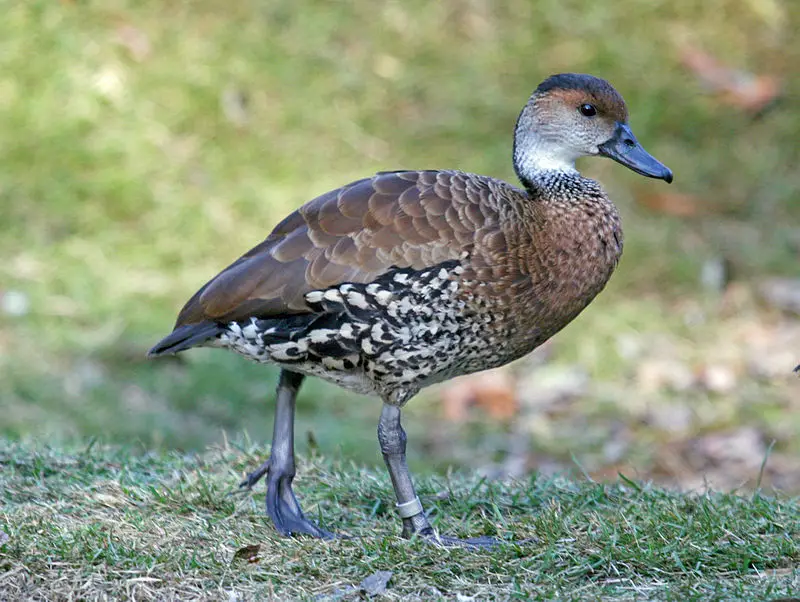
The West Indian whistling duck is a beautiful species of bird native to the Caribbean. This duck has an unmistakable call, as its name implies it can whistle.
It also has black bill and legs with grey-brown feathers that help camouflage it in its environment.
The primary breeding range of this species includes the Bahamas, Cuba, Cayman Islands, Antigua and Barbuda Jamaica, Hispaniola and Puerto Rico where they live mainly in shallow freshwater wetlands such as ponds or swamps.
Besides their distinctive whistles these birds are able to communicate through various other calls including grunts , honks and quacks.
They feed on aquatic plants but may occasionally eat small invertebrates like insects too.
Despite being hunted for food by humans these ducks still remain widespread throughout their habitats due to successful conservation efforts put into place over recent years making them a symbol of hope for many wildlife enthusiasts around the world today.Scientific classification:
| Kingdom | Animalia |
| Phylum | Chordata |
| Class | Aves |
| Order | Anseriformes |
| Family | Anatidae |
| Genus | Dendrocygna |
| Species | D. arborea |
Also Featured In: Common Birds Found near North Caicos, South Caicos Birds You Should Know
24. Key West Quail-Dove
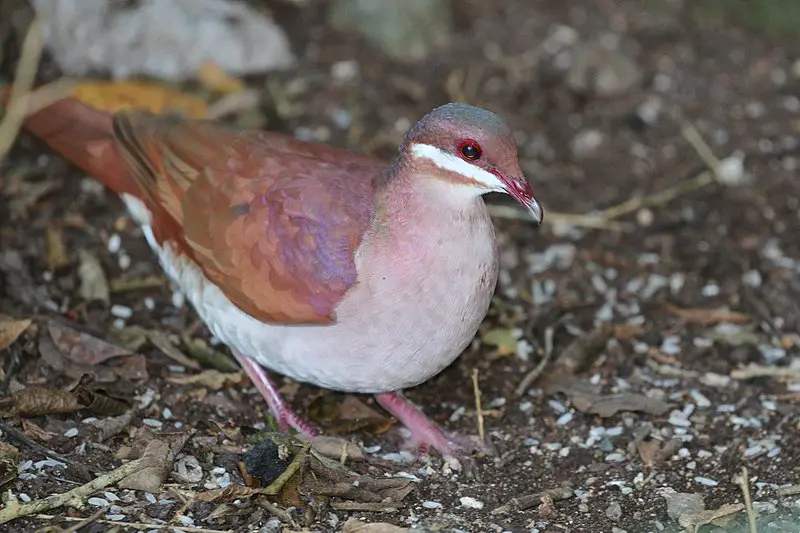
The Key West quail-dove is a species of bird from the Columbidae family, and is closely related to the bridled quail-dove. It breeds in The Bahamas and throughout most of Greater Antilles, except for Jamaica.
Interestingly enough, despite its name it does not currently breed in Florida Keys or Southern mainland Florida.
This dove has a light brown back with white underparts that are streaked on their sides and throat; they also have a distinctive black collar around their neck which makes them easily recognizable along with their red eyes.
These birds tend to live alone or in small flocks near open fields where food (seeds) can be found.
Unfortunately this species’ range seems to be getting smaller due to human activities such as deforestation but there are some conservation efforts being done like creating protected areas within these regions so we hope one day people will get to enjoy watching these beautiful creatures again.Scientific classification:
| Kingdom | Animalia |
| Phylum | Chordata |
| Class | Aves |
| Order | Columbiformes |
| Family | Columbidae |
| Genus | Geotrygon |
| Species | G. chrysia |
25. Bahama Mockingbird
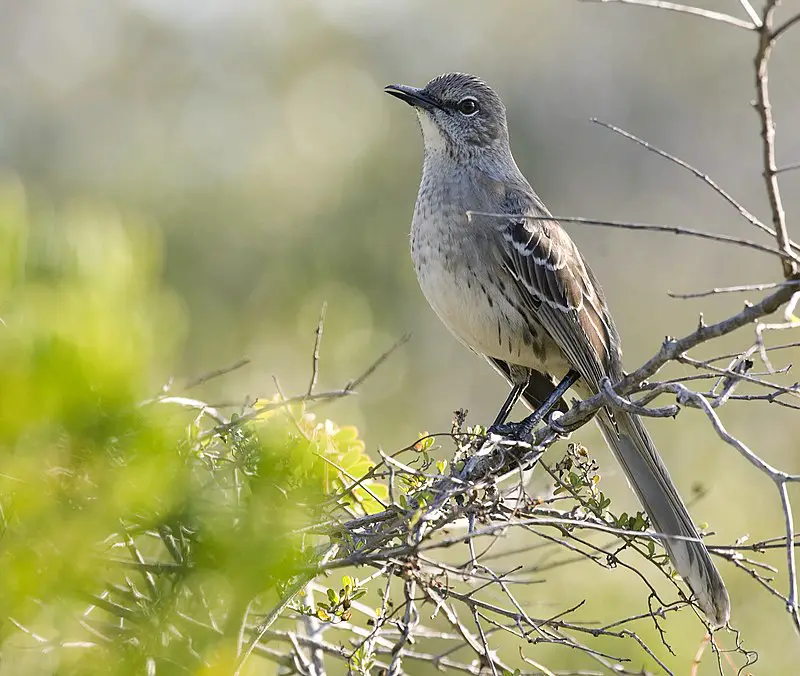
The Bahama Mockingbird is a species of bird found in the Bahamas, Cuba, Jamaica and the Turks and Caicos Islands. It is also known to be a vagrant to Florida.
This medium-sized greyish brown bird has two subspecies – Mimus gundlachii gundlachii (the nominate) and M. g hillii. The specific epithet ‘gundlachii’ honors Juan Gundlach who first described this species in 1841 on his expedition to Cuba.
On an average it measures 28 cm long with a wingspan of 39 cm when fully grown up; however males are larger than their female counterparts by about 10%.
They have gray upperparts along with white underparts which contain spots running down its sides as well as across its breast area for camouflaging themselves against predators like cats or foxes that may prey upon them during nesting season or otherwise.
These birds primarily feed on insects alongside fruits & berries occasionally too making them omnivorous creatures.Scientific classification:
| Kingdom | Animalia |
| Phylum | Chordata |
| Class | Aves |
| Order | Passeriformes |
| Family | Mimidae |
| Genus | Mimus |
| Species | M. gundlachii |
26. Northern Gannet
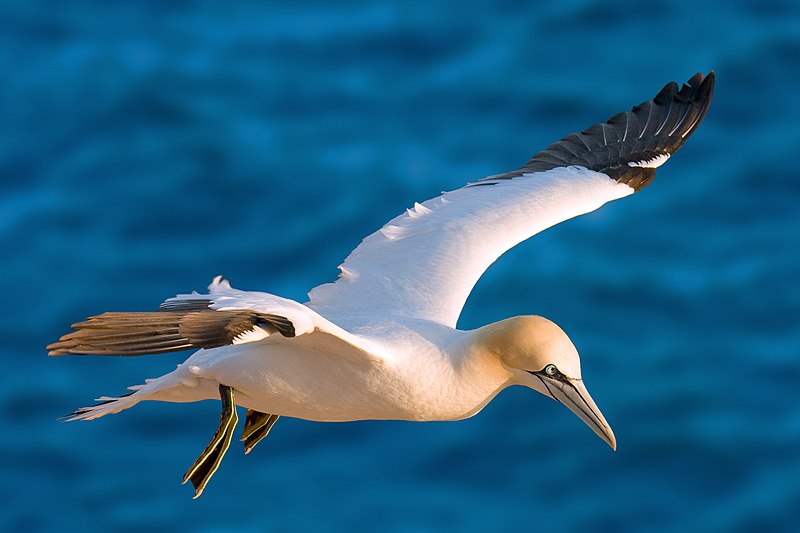
The Northern Gannet is the largest species of seabird in the northern Atlantic, with a white body and long neck.
It has yellowish head feathers and black tipped wings that can reach up to 6 feet across when fully extended.
The beak is large and orange-yellow in color. This bird breeds along western Europe’s coasts as well as northeastern North America.
They forage for fish by plunging into the sea from high above, making them an impressive sight to behold on any given day.
Their diet consists mainly of herring, mackerels or sand eels which they catch midair after diving at speeds reaching over 100 miles per hour.
With their striking features these birds are truly majestic creatures that have been around since prehistoric times – a testament to their hardiness and adaptability.Scientific classification:
| Kingdom | Animalia |
| Phylum | Chordata |
| Class | Aves |
| Order | Suliformes |
| Family | Sulidae |
| Genus | Morus |
| Species | M. bassanus |
Also Featured In: Birds found in portugal, Birds Live in Tunisia
27. Nightjars
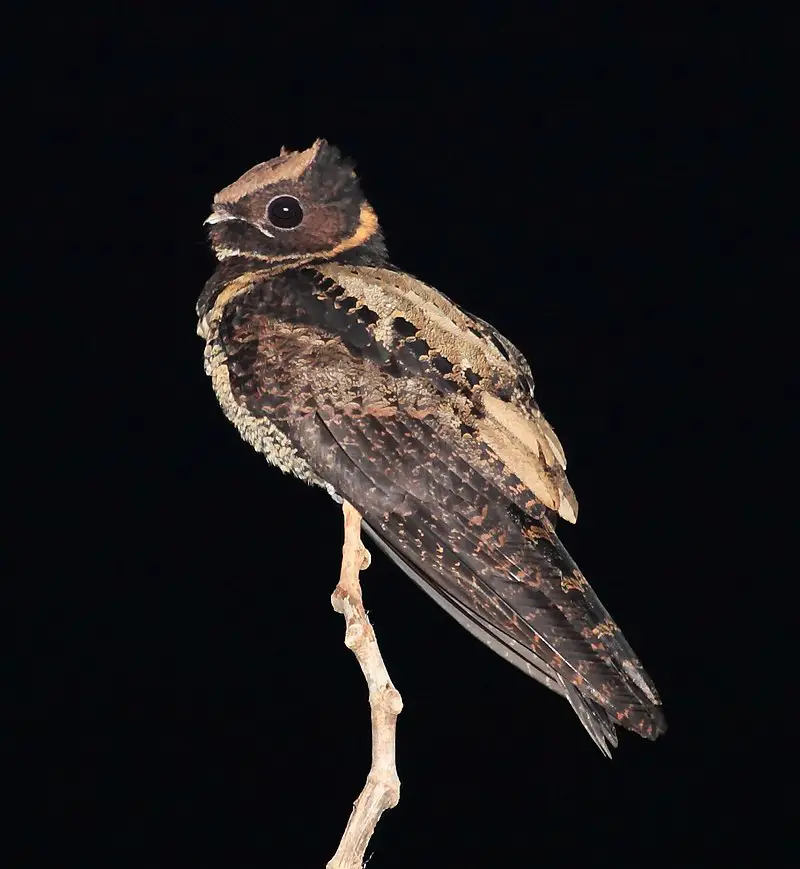
Nightjars are fascinating nocturnal or crepuscular birds belonging to the Caprimulgidae family. These medium-sized birds have long wings, short legs and very small bills.
They can be found across many parts of the world in forests, grasslands and scrubland habitats.
Nightjars feed on insects such as moths, beetles, crickets and cicadas which they catch with their sharp eyesight during night time flights over open fields when hunting for food.
Their scientific name ‘Caprimulgidae’ is derived from an old folktale that claims these birds suck milk from goats.
In reality though, they are harmless creatures who pose no threat to livestock whatsoever.
Nightjars make a variety of different calls ranging from whistles to chirps all throughout the night – adding further mystery to this amazing species.Scientific classification:
| Kingdom | Animalia |
| Phylum | Chordata |
| Class | Aves |
| Clade | Strisores |
| Order | Caprimulgiformes Ridgway, 1881 |
| Family | Caprimulgidae Vigors, 1825 |
Also Featured In: Birds of Israel, Lebanon Birds Live in Semi-Desert Areas
28. Bahama Woodstar
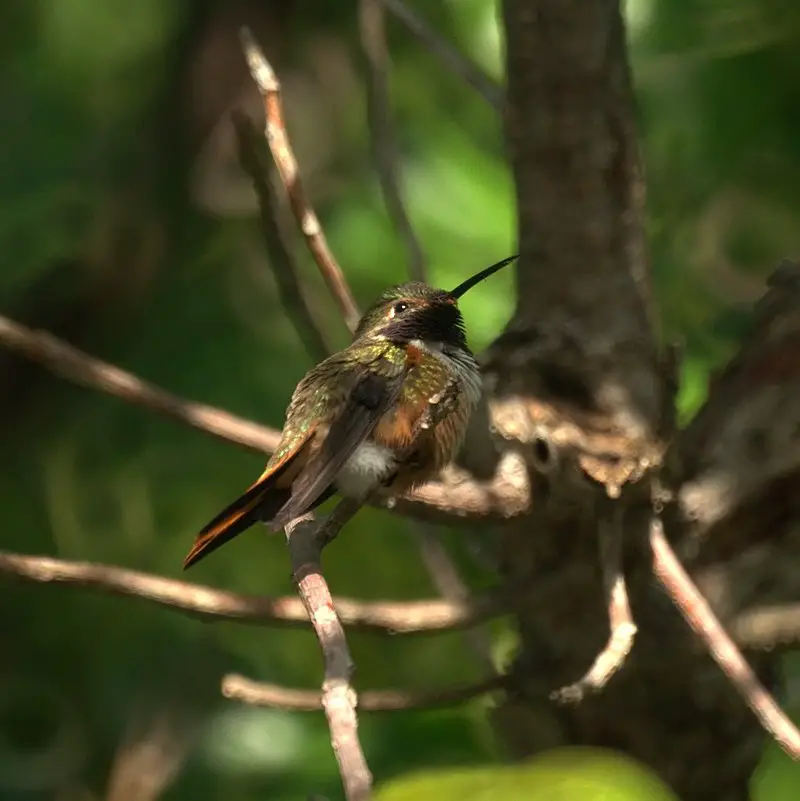
The Bahama woodstar, or ‘hummer’, is a species of hummingbird found in the Lucayan archipelago. It has a distinct sound it makes while feeding and can easily be identified by locals.
Hummingbirds are one of the most abundant avian families around with 338 recognized species.
These birds have an impressive array of colors that range from pinks and purples to greens and blues, depending on the season.
The wingspan for this particular type ranges from 4-5 inches long – making them quite small compared to other bird types.
They feed on nectar from flowers as well as insects which they obtain through their specialized bill shapes specifically adapted for hovering over plants efficiently so they can extract pollen grains quickly without expending too much energy during flight.
Furthermore, these tiny creatures also possess incredible migratory abilities; some travel up to 6500 miles round trip each year.Scientific classification:
| Kingdom | Animalia |
| Phylum | Chordata |
| Class | Aves |
| Order | Apodiformes |
| Family | Trochilidae |
| Genus | Nesophlox |
| Species | N. evelynae |
Also Featured In: Bahamas Birds, Hummingbirds Live around Florida
29. Bahama Swallow
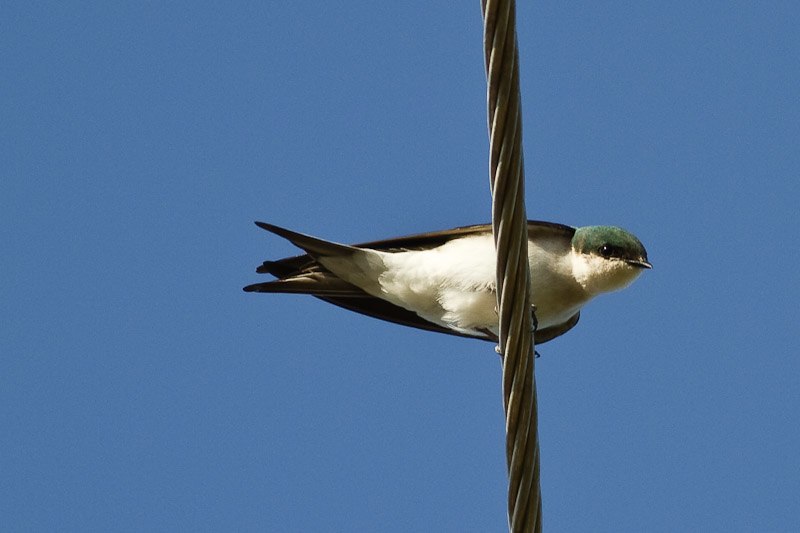
The Bahama swallow is a unique species of bird found only in the Bahamas. It has an emerald green head and back, blue wings, black tail and wingtips, and a white chin and belly.
This beautiful creature can be seen breeding mainly in pineyards on four islands – Andros, Grand Bahama, Abaco and New Providence.
The population on New Providence alone is estimated to number fewer than 250 individuals.
These swallows are generally solitary birds that feed during the day on insects such as flies or beetles.
They roost at night in shrubs or trees but rarely use artificial dwellings like barns or houses for shelter from predators.
Conservation efforts must be made to ensure this endemic species continues to thrive within its natural habitat range so future generations may appreciate its distinctive beauty too.Scientific classification:
| Kingdom | Animalia |
| Phylum | Chordata |
| Class | Aves |
| Order | Passeriformes |
| Family | Hirundinidae |
| Genus | Tachycineta |
| Species | T. cyaneoviridis |
30. Black-Faced Grassquit
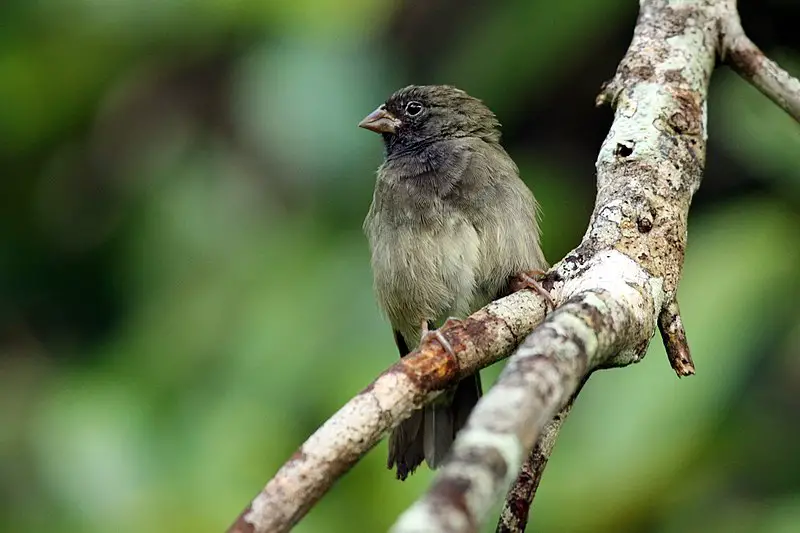
The Black-faced grassquit is a small bird belonging to the tanager family, genetically related to Darwin’s finches. It breeds mainly in the West Indies and along certain parts of Colombia and Venezuela.
The Swedish naturalist Carl Linnaeus first formally described it back in 1766 as part of his twelfth edition work on species classification.
This type of bird has a black head with white spots around its eyes, grey wings and tail feathers; its body is brownish orange or yellow with darker shades towards the belly area.
Its diet consists mostly of seeds from grasses but may also include other insects for additional nutrition during breeding season.Scientific classification:
| Kingdom | Animalia |
| Phylum | Chordata |
| Class | Aves |
| Order | Passeriformes |
| Family | Thraupidae |
| Genus | Melanospiza |
| Species | M. bicolor |
Also Featured In: Common Margarita Island Birds,
31. Antillean Nighthawk
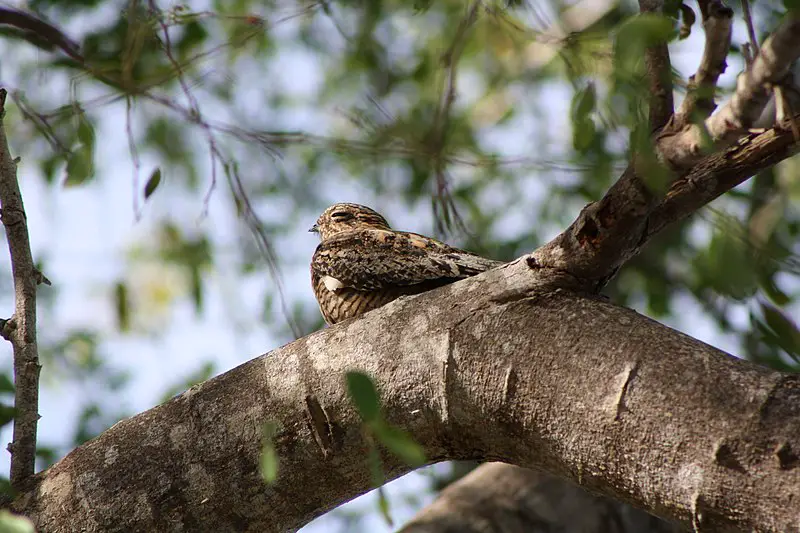
The Antillean nighthawk is an impressive nocturnal bird native to the Caribbean and Florida Keys.
It has a distinct colour scheme of dark brown, grey and white patterning on its upperparts and breast; long wings are black with a white bar visible in flight; tail dark with barring, while underparts are white with blackish-brown streaks.
Named after Cuban naturalist Juan Gundlach, these birds can be found near forest edges or open habitats like savannahs.
They feed primarily by hawking insects at night using their large eyes for good vision in low light conditions.
During breeding season they perform an aerial courtship display involving dives from altitude followed by steep climbs back up again as pairs circle each other doing tight circles around one another – truly spectacular.Scientific classification:
| Kingdom | Animalia |
| Phylum | Chordata |
| Class | Aves |
| Order | Caprimulgiformes |
| Family | Caprimulgidae |
| Genus | Chordeiles |
| Species | C. gundlachii |
Also Featured In: Most Common Birds of Sugarloaf Key,
32. Audubon’s Shearwater
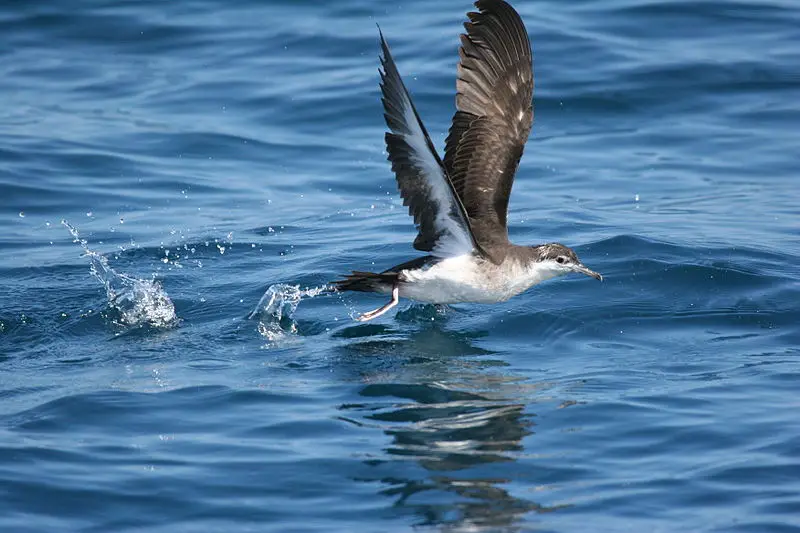
Audubon’s shearwater is a type of seabird belonging to the petrel family. It has many different monikers, including Baillon’s shearwater, tropical shearwater, Bannerman’s shearwater, Mascarene shearwater and Persian Sheawater.
This species was first discovered by French naturalist F�lix Louis L’Herminier in 1836 and earned its scientific name (Puffinus lherminieri) in his honour.
These birds are found throughout tropical oceans across the world from Africa to Asia and even Hawaii.
They have dark brown back feathers with white bellies which help them blend into their environment for protection against predators.
Audubon�s Sheerwaters feed on small fish near ocean surfaces or dive deep underwater when necessary due to their strong wings allowing them excellent swimming capabilities through powerful winds at sea level as well as incredible endurance during long distance flights over vast areas of open water around islands or coastlines.Scientific classification:
| Kingdom | Animalia |
| Phylum | Chordata |
| Class | Aves |
| Order | Procellariiformes |
| Family | Procellariidae |
| Genus | Puffinus |
| Species | P. lherminieri |
33. Pearly-Eyed Thrasher
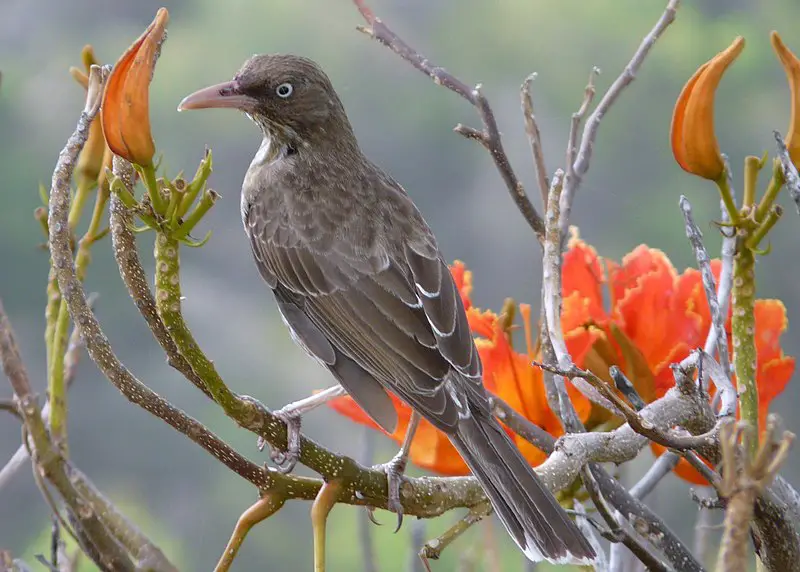
The Pearly-eyed Thrush is a unique and beautiful bird native to the Caribbean islands. It has stunning pearly eyes, with white patches on its wings and tail.
This thrasher measures up to 28-30 cm in length, making it the largest species of Mimidae family found in this area.
With an isolated subspecies living on Bonaire island, these birds have adapted well to their environment over time.
They feed mainly on insects found around them, but will also eat fruits or berries when available for extra nourishment.
These birds are often seen singing together as part of group displays at dawn or dusk – one more reason why they are so special.Scientific classification:
| Kingdom | Animalia |
| Phylum | Chordata |
| Class | Aves |
| Order | Passeriformes |
| Family | Mimidae |
| Genus | Margarops P.L. Sclater, 1859 |
| Species | M. fuscatus |
Also Featured In: Winged Marvels of St Martin’s: A Bird Enthusiast’s Delight, Native Birds Of Guadeloupe Island
34. Scaly-Naped Pigeon
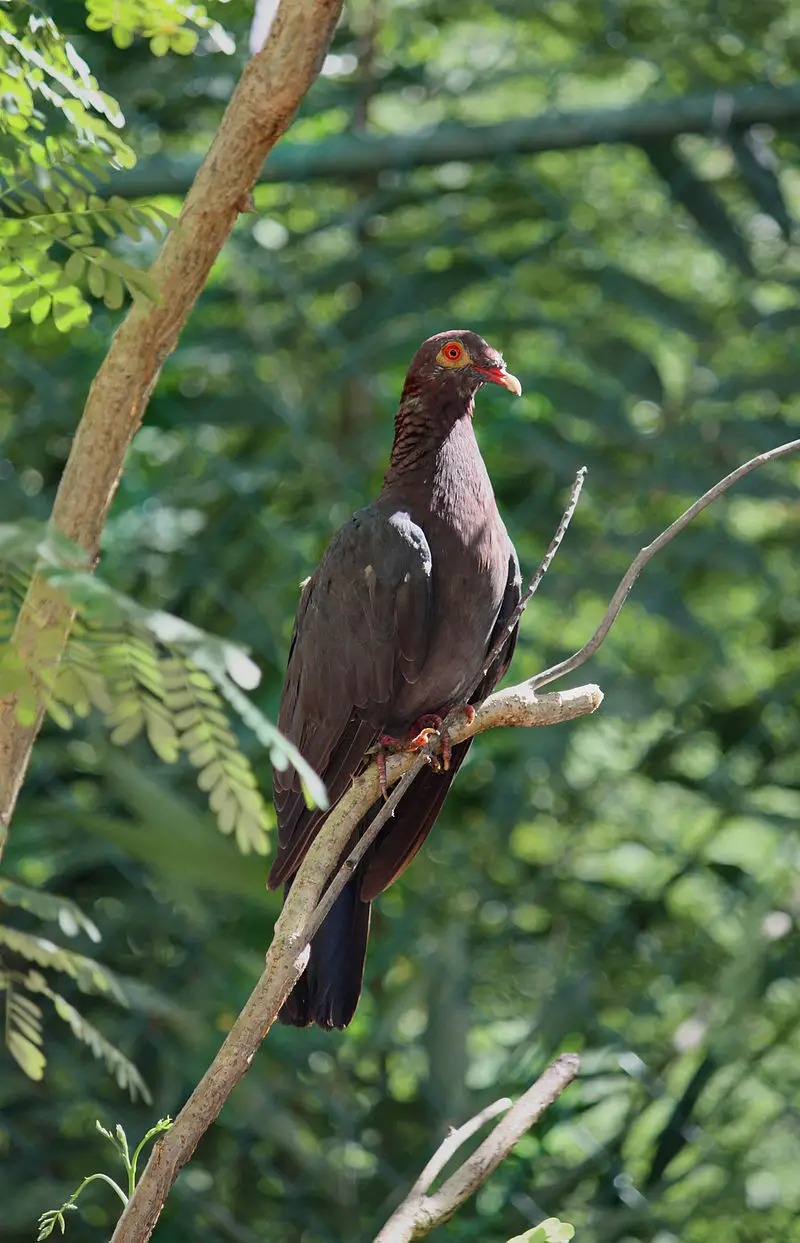
The scaly-naped pigeon is a large bird belonging to the family Columbidae. It has slate grey plumage with maroon coloured feathers around its neck, giving it the common name of red-necked pigeon.
The species originates from throughout the Caribbean and can reach 14–16 inches in length.
Its scientific name is derived from its unique feature: small scales on its nape which form an attractive pattern when viewed up close.
This makes them easily distinguishable from other birds within their range as they are one of few that have this characteristic.
They feed mainly on fruit but also consume seeds, insects and even carrion depending on availability at any given time of year or location.Scientific classification:
| Kingdom | Animalia |
| Phylum | Chordata |
| Class | Aves |
| Order | Columbiformes |
| Family | Columbidae |
| Genus | Patagioenas |
| Species | P. squamosa |
Also Featured In: Common Birds of St. Vincent Island, Common Birds Found near Necker Island
35. Gray Kingbird
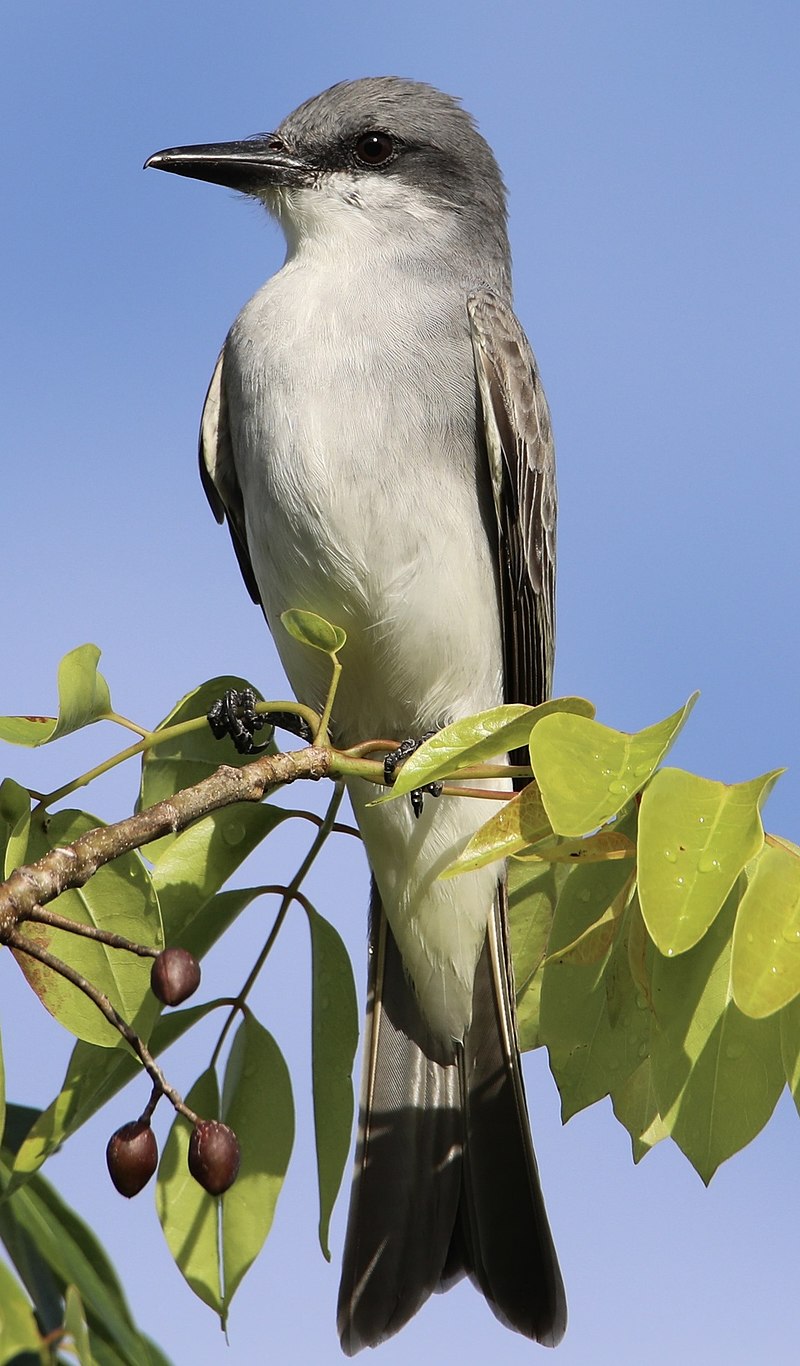
The Gray Kingbird is a species of tyrant flycatcher found in tall trees and shrubs, including the edges of savannas and marshes. It has gray feathers on its back with white underparts and blackish wings.
Its head is dark gray-brown or olive, while its tail is tipped with white. The Gray Kingbird builds flimsy cup nests from twigs in tree branches for their eggs to incubate safely until they hatch into chicks.
They feed mainly on insects such as moths, grasshoppers, beetles, crickets and caterpillars that can be caught midair when it swoops down from above like other kingbirds do.
This bird’s call consists of loud chirps which are often heard during mating season – making them an easily identifiable species within areas where they live.Scientific classification:
| Kingdom | Animalia |
| Phylum | Chordata |
| Class | Aves |
| Order | Passeriformes |
| Family | Tyrannidae |
| Genus | Tyrannus |
| Species | T. dominicensis |
Also Featured In: Barbados Birds, Birds That Live In Boca Grande
36. Zenaida Dove
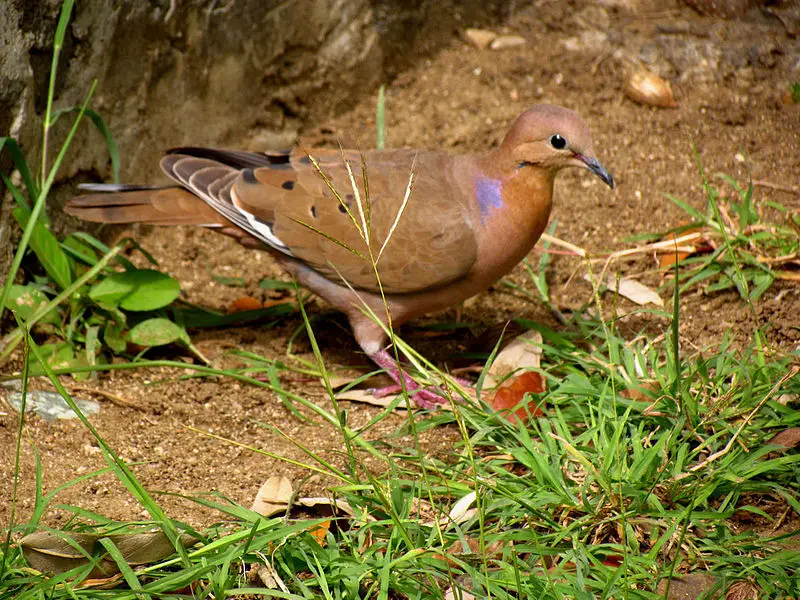
The Zenaida dove is a species of doves and pigeons found mainly in the Caribbean, but also parts of Mexico, Central America and South America.
With its distinct dark coloring, short rounded tail and an average length of 28-30 cm (11-12 inches), it stands out from other bird families.
It’s recognized as the national bird for Anguilla where locals refer to it as ‘turtle dove’. They are seen flying around open grasslands or roosting on tree branches close by populated areas.
These birds feed mostly on seeds that they pick off the ground while walking through fields.
The Zenaida Dove breeds all year round producing two broods during spring and summer months with both male and female taking turns incubating eggs over a span of 14 days before hatching into chicks.Scientific classification:
| Kingdom | Animalia |
| Phylum | Chordata |
| Class | Aves |
| Order | Columbiformes |
| Family | Columbidae |
| Genus | Zenaida |
| Species | Z. aurita |
37. Stilt Sandpiper
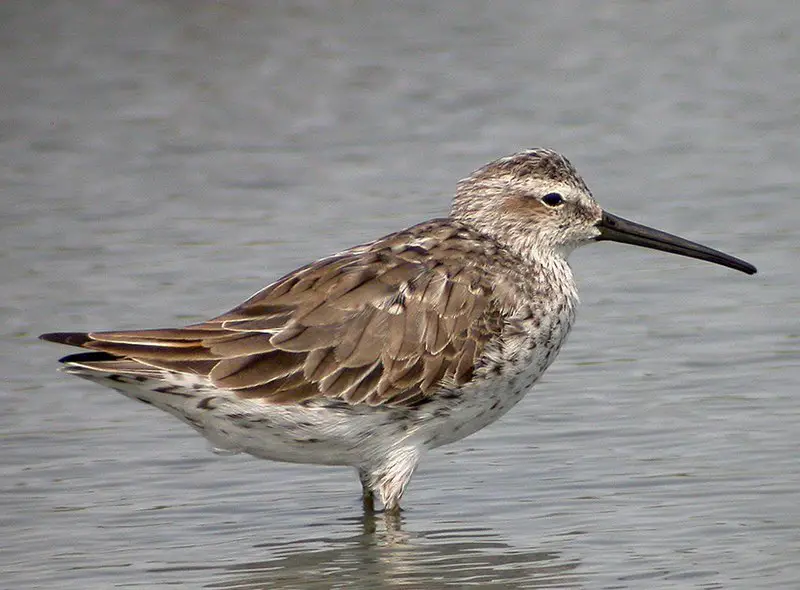
The Stilt Sandpiper (Calidris himantopus) is a small shorebird with ancient Greek origins. It has grey-coloured feathers, and its scientific name is derived from the terms “strap foot” or “thong foot”.
This bird bears some resemblance to smaller calidrid sandpipers, also known as ‘stints’. Through recent DNA sequence information, it was found that this species of birds are closely related to other wading shorebirds such as curlews and godwits.
They can usually be seen along the edges of rivers and creeks in shallow waters where they feed on aquatic insects like beetles, flies, mayflies etc., which makes them an important part of their ecosystem’s food chain.
The stilt sandpiper population appears to have been stable over time but further research needs to be done in order for us to understand more about this unique species.Scientific classification:
| Kingdom | Animalia |
| Phylum | Chordata |
| Class | Aves |
| Order | Charadriiformes |
| Family | Scolopacidae |
| Genus | Calidris |
| Species | C. himantopus |
Also Featured In: Saint Lucia Birds, Common Northwest Territories Birds
38. Caribbean Martin
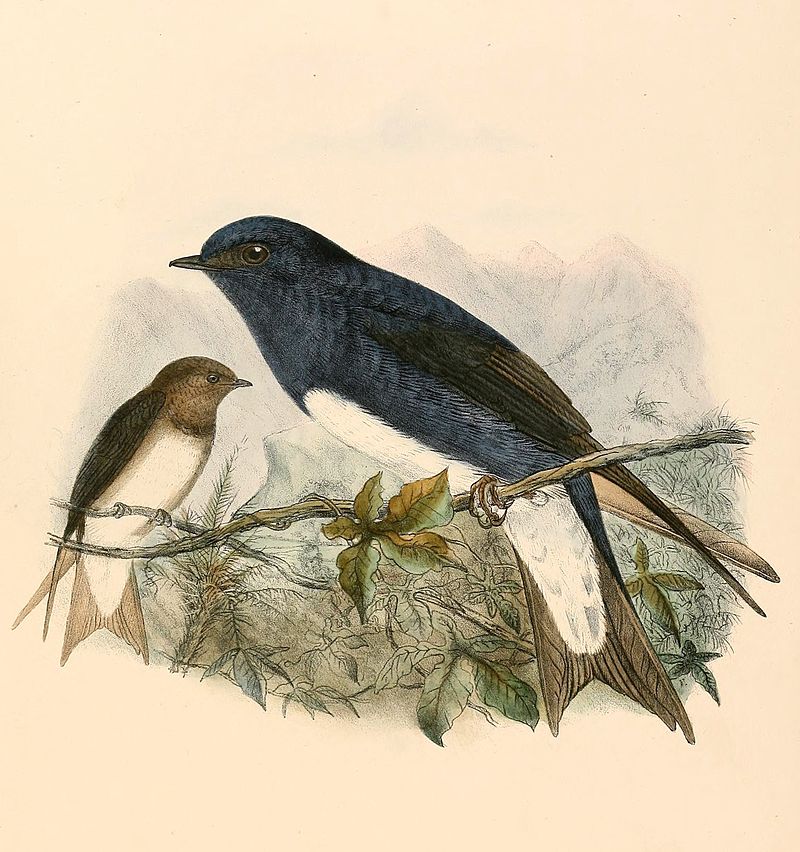
The Caribbean martin is a large swallow that can be found throughout the Caribbean, except on Cuba and Isla de la Juventud.
It has at various times been thought to be related to the purple martin but more recently it has been recognised as its own species – Progne dominicensis.
This species is closely related to both the Cuban martin (P. cryptoleuca) and South American martins (S. chirica).
The adult birds have predominantly white underparts with grey-brown upper parts and black wings.
Their tail feathers are forked in shape making them very distinctive when flying through their habitats of open woodlands, savannas or mangroves near bodies of water such as lakes or rivers where they feed mainly on insects like dragonflies or termites.Scientific classification:
| Kingdom | Animalia |
| Phylum | Chordata |
| Class | Aves |
| Order | Passeriformes |
| Family | Hirundinidae |
| Genus | Progne |
| Species | P. dominicensis |
39. Trindade Petrel
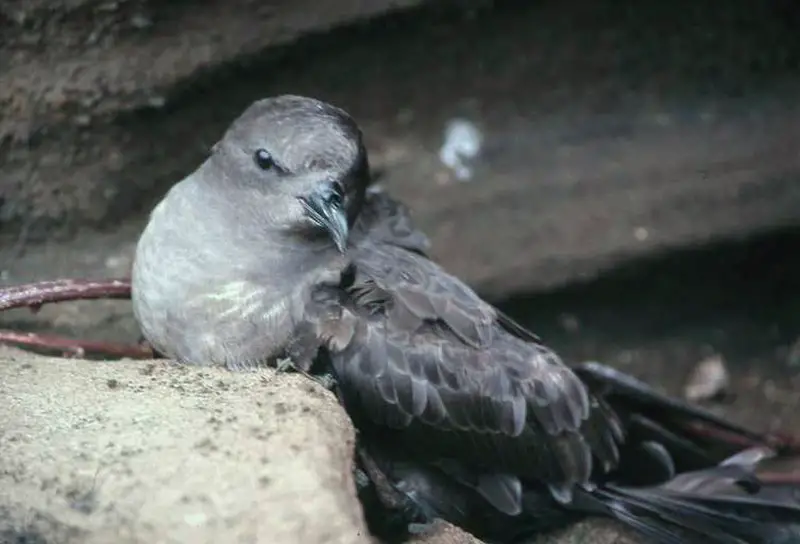
The Trindade petrel is a species of seabird belonging to the gadfly petrel family. It has an average size of 35-39 cm and wingspan varying between 88-102 cm.
Its plumage can be dark, light or intermediate between the two shades. Two populations were initially thought to belong to this species: one in the south Pacific and another near Trinidad Island off Brazil’s Atlantic coast, hence its name ‘Trindade’ petrels.
This bird depends on open ocean for feeding as it primarily feeds on fishes, cephalopods and crustaceans like krill & squids which are found there only.
Unfortunately their population numbers have been declining due to habitat destruction caused by human activities such as overfishing & pollution leading them towards endangerment.Scientific classification:
| Kingdom | Animalia |
| Phylum | Chordata |
| Class | Aves |
| Order | Procellariiformes |
| Family | Procellariidae |
| Genus | Pterodroma |
| Species | P. arminjoniana |
Also Featured In: Bermuda birds, Easter Island Birds You Should Know
40. Flamingos
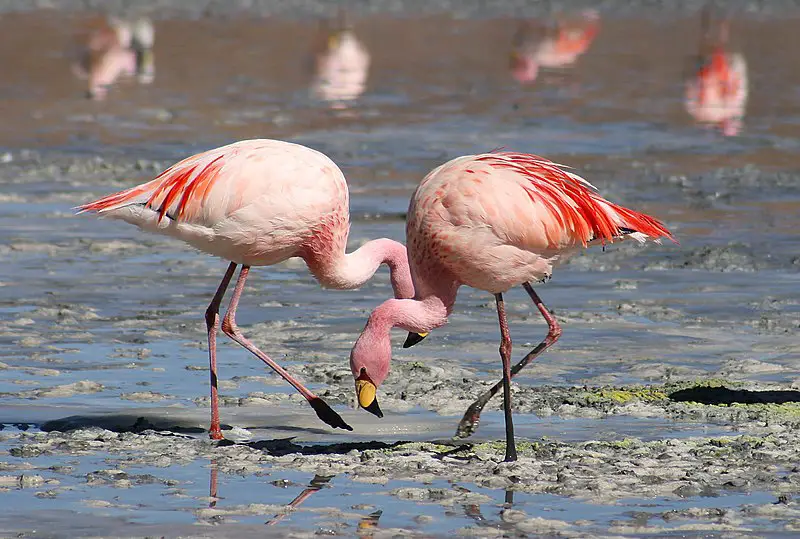
Flamingos are a type of water bird that belong to the Phoenicopteriformes group. They are known for their distinctive pink coloring and long, thin legs.
Flamingos are closely related to grebes and are part of the Mirandornithes clade. These birds are well-documented in the fossil record, with some of their extinct relatives dating back millions of years.
In fact, the first known member of the Phoenicopteridae family was a bird called Elornis. Flamingos are known for their unique feeding habits, which involve using their beaks to filter food from the water.
They are also social creatures that typically live in large groups called colonies.
Overall, flamingos are fascinating creatures with a long history on our planet.Scientific classification:
| Kingdom | Animalia |
| Phylum | Chordata |
| Class | Aves |
| Clade | Mirandornithes |
| Order | Phoenicopteriformes Fürbringer, 1888 |
Also Featured In: Common Algerian Birds , Most Common Romanian Birds
41. Wilson’s Plover
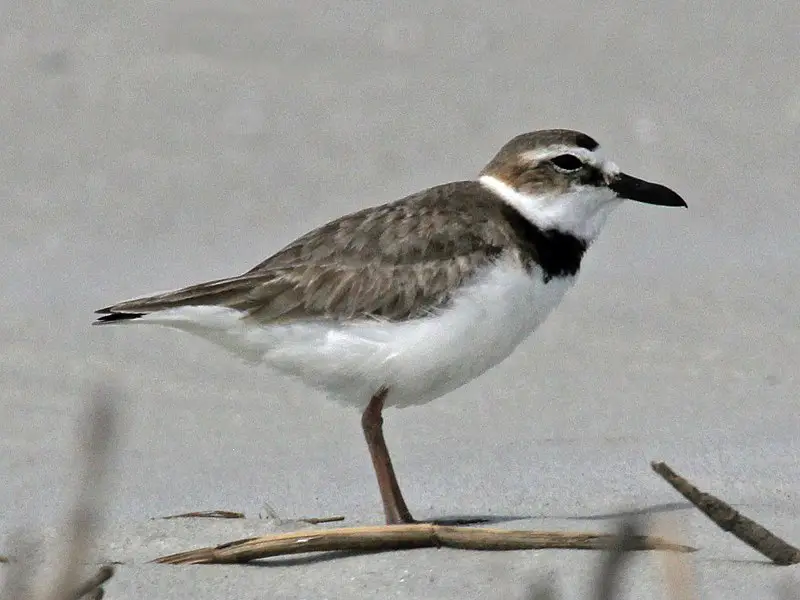
Wilson’s plover is a bird belonging to the Charadriidae family. The species was named after the ornithologist Alexander Wilson by his friend George Ord.
This small bird is typically found along the coasts of the Americas and breeds on both sides of the equator. Its range extends northward, including much of the U.S.
eastern seaboard and the Pacific coast of Mexico. Wilson’s plover is a coastal wader that loves to inhabit sandy and rocky shores, beaches, and salt marshes. They feed on crustaceans, insects, and other small creatures found near the shoreline.
This bird’s male and female have a similar appearance, with brownish-grey upperparts and white underparts. They are known to fiercely defend their nests and young against predators.
The Wilson’s plover is a unique bird species that plays a significant role in the coastal ecosystem.Scientific classification:
| Kingdom | Animalia |
| Phylum | Chordata |
| Class | Aves |
| Order | Charadriiformes |
| Family | Charadriidae |
| Genus | Charadrius |
| Species | C. wilsonia |
Also Featured In: Most Common Oaxaca Birds, Great Abaco Island Birds
42. Waxwing Birds
Waxwing birds are a family of birds that belong to the Bombycillidae family. They are known for their uniquely shaped beaks with a small hook at the end.
These birds are native to North America and are sometimes referred to as ‘Cedar Waxwings’. Waxwings are social birds and often move around in flocks. They usually feed on fruits and berries, but also eat insects when available.
The birds’ plumage is grayish-brown with a crest on their head and a yellow-tipped tail.
Waxwings are known for their distinct high-pitched calls and melodic songs. These birds build nests made from sticks and grasses, and lay 2-6 eggs per brood.
They are considered to be of least concern for conservation and can be found in a wide variety of habitats, from parks to forests.
43. Swainson’s Warbler
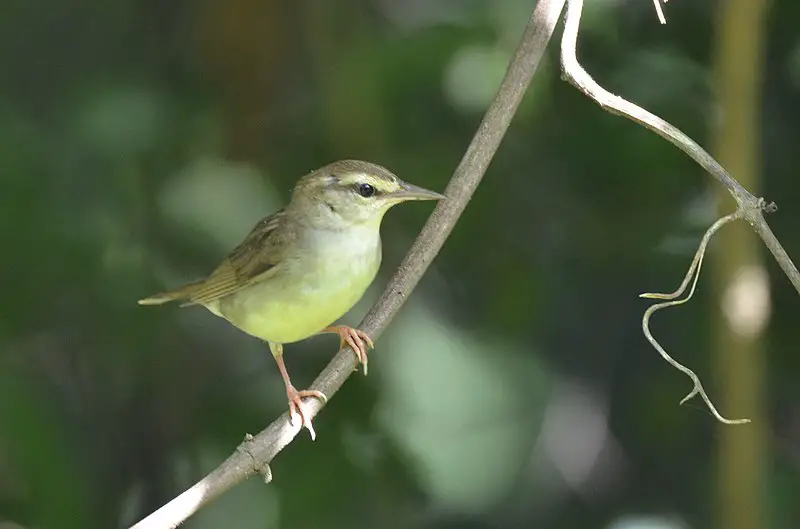
The Swainson’s warbler is a unique New World warbler, as it is the only member of its genus, Limnothlypis. William Swainson, an English ornithologist, lends his name to this species.
Although they may appear nondescript, these songbirds are actually fairly large for New World warblers, measuring between 12.5-16 cm in length and weighing between 11-20.5 grams.
Their appearance is unremarkable, with brownish-grey feathers and a plain face with a small beak.
They are not typically seen out in the open, preferring to stay hidden in dense foliage or the forest understory.
Despite this, they have a lovely and unique song, consisting of a series of clear whistled notes.
Swainson’s warblers have a limited range in the southeastern United States, where they can be found in wetland and swamp habitats.Scientific classification:
| Kingdom | Animalia |
| Phylum | Chordata |
| Class | Aves |
| Order | Passeriformes |
| Family | Parulidae |
| Genus | Limnothlypis Stone, 1914 |
| Species | L. swainsonii |